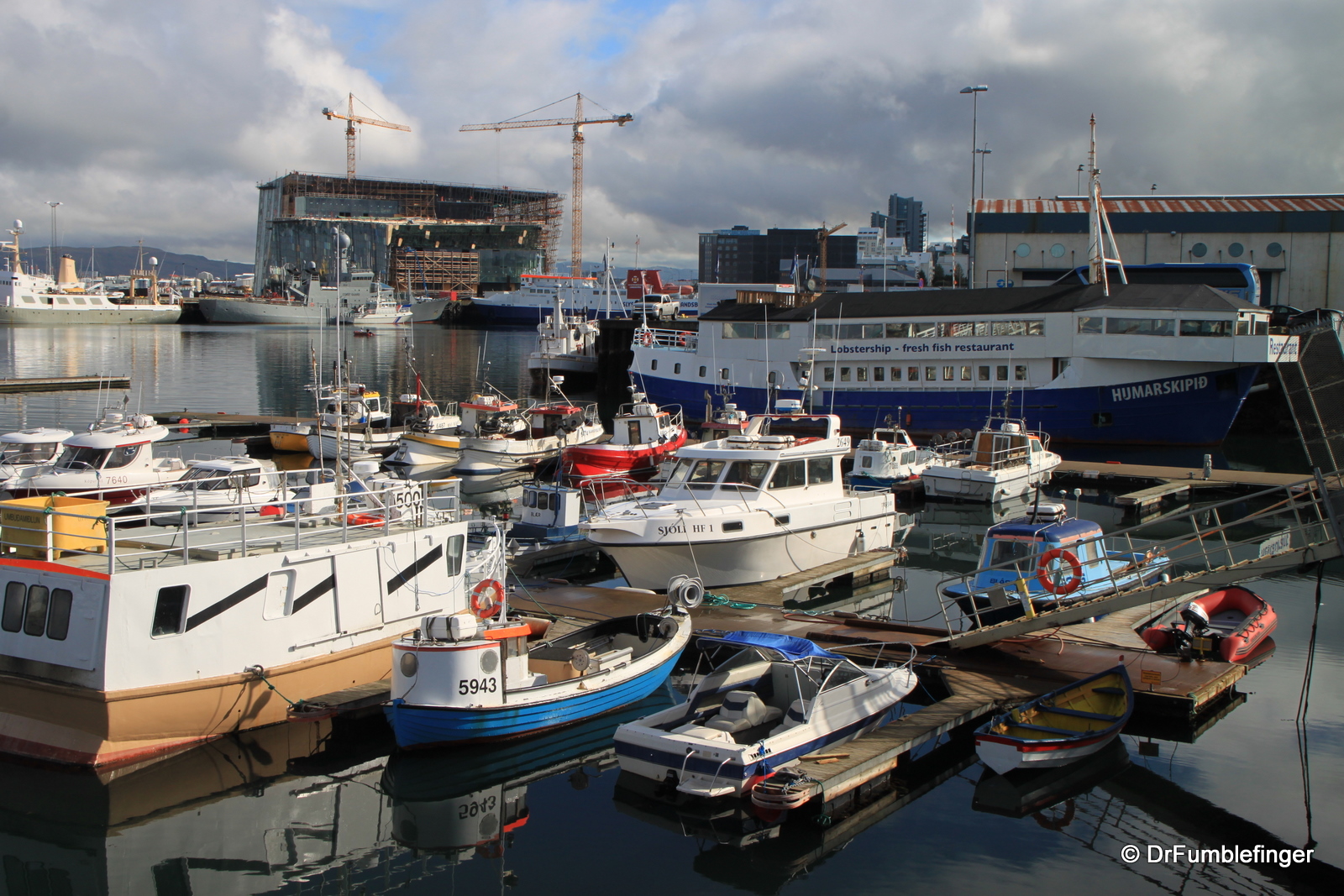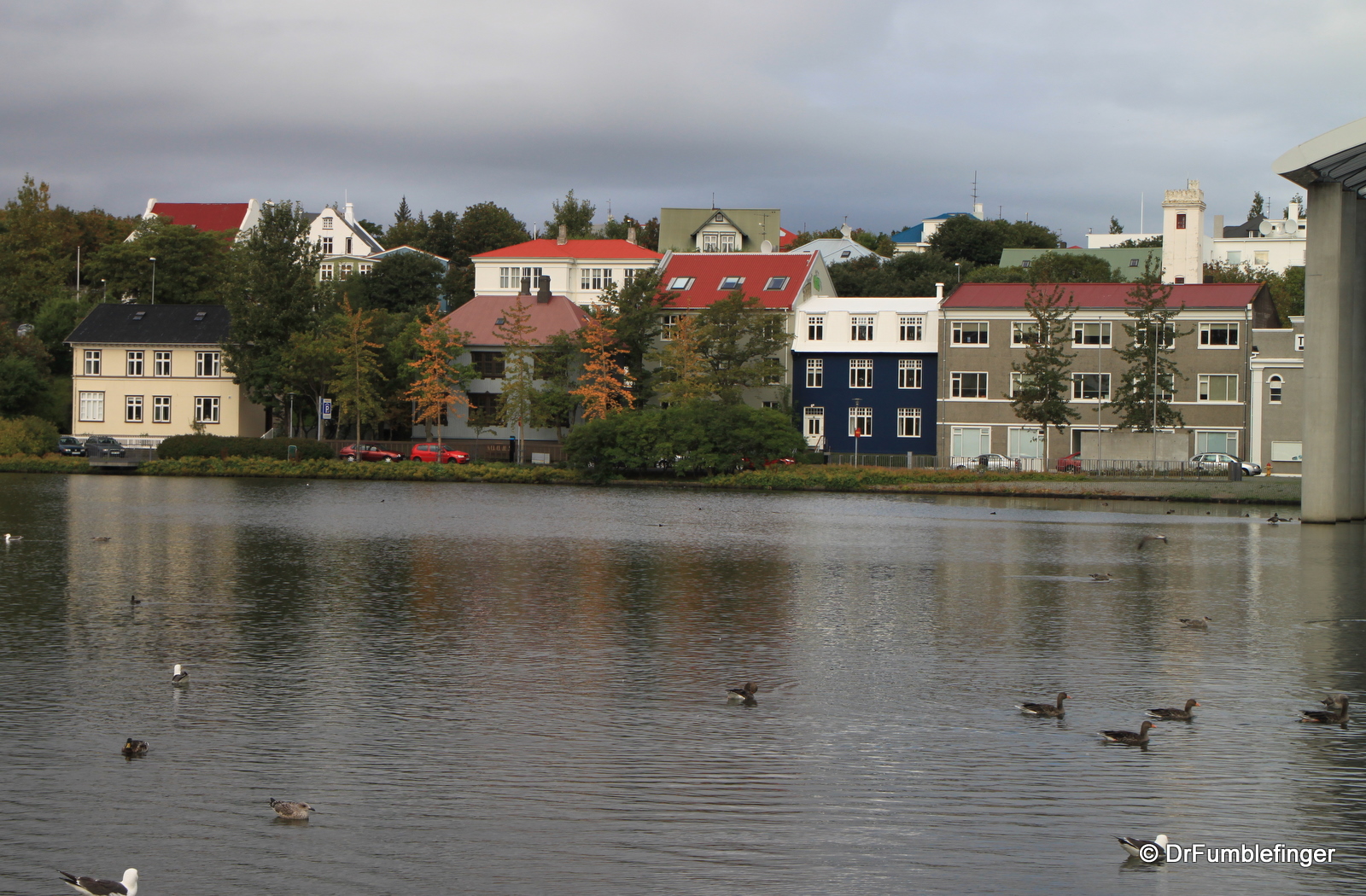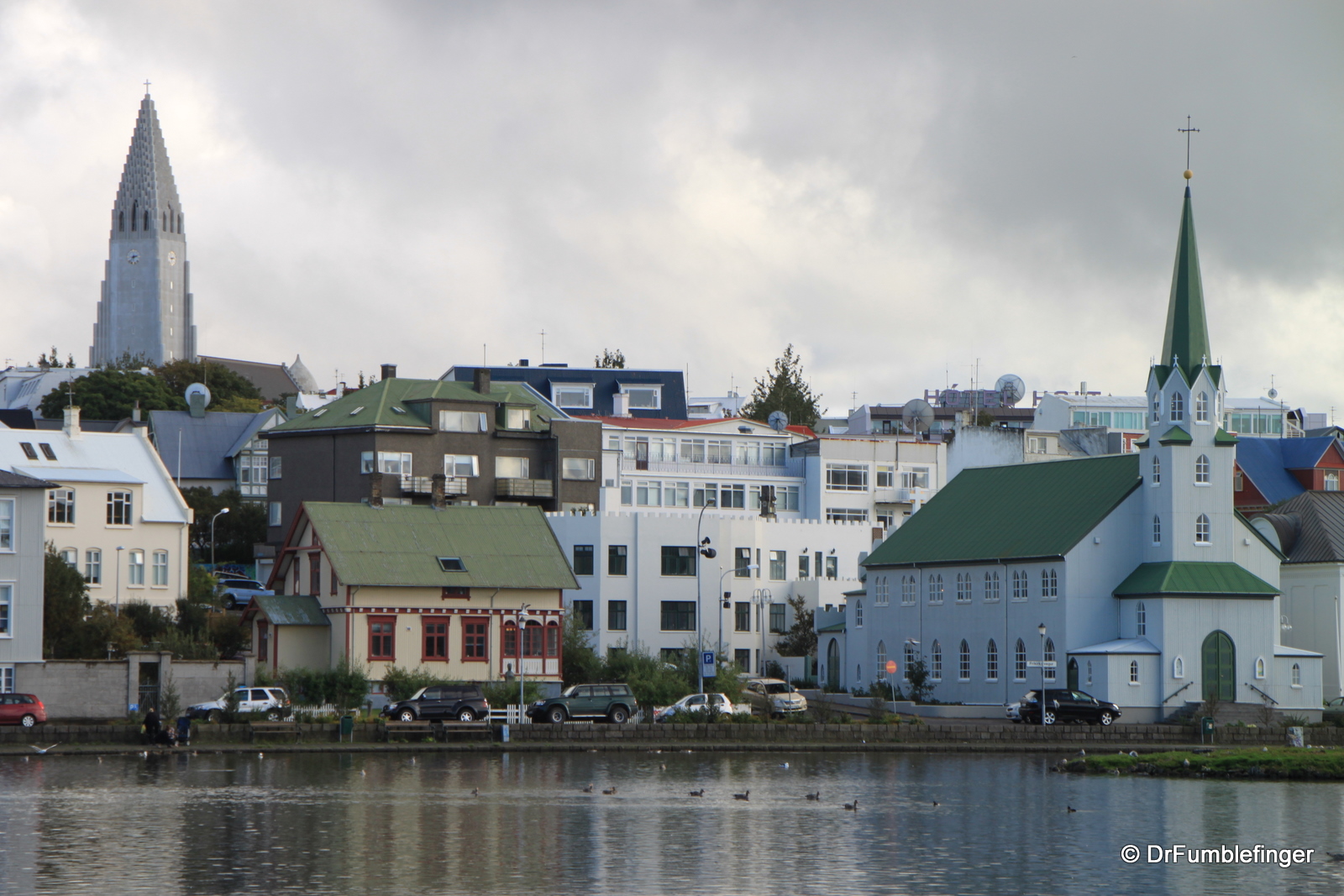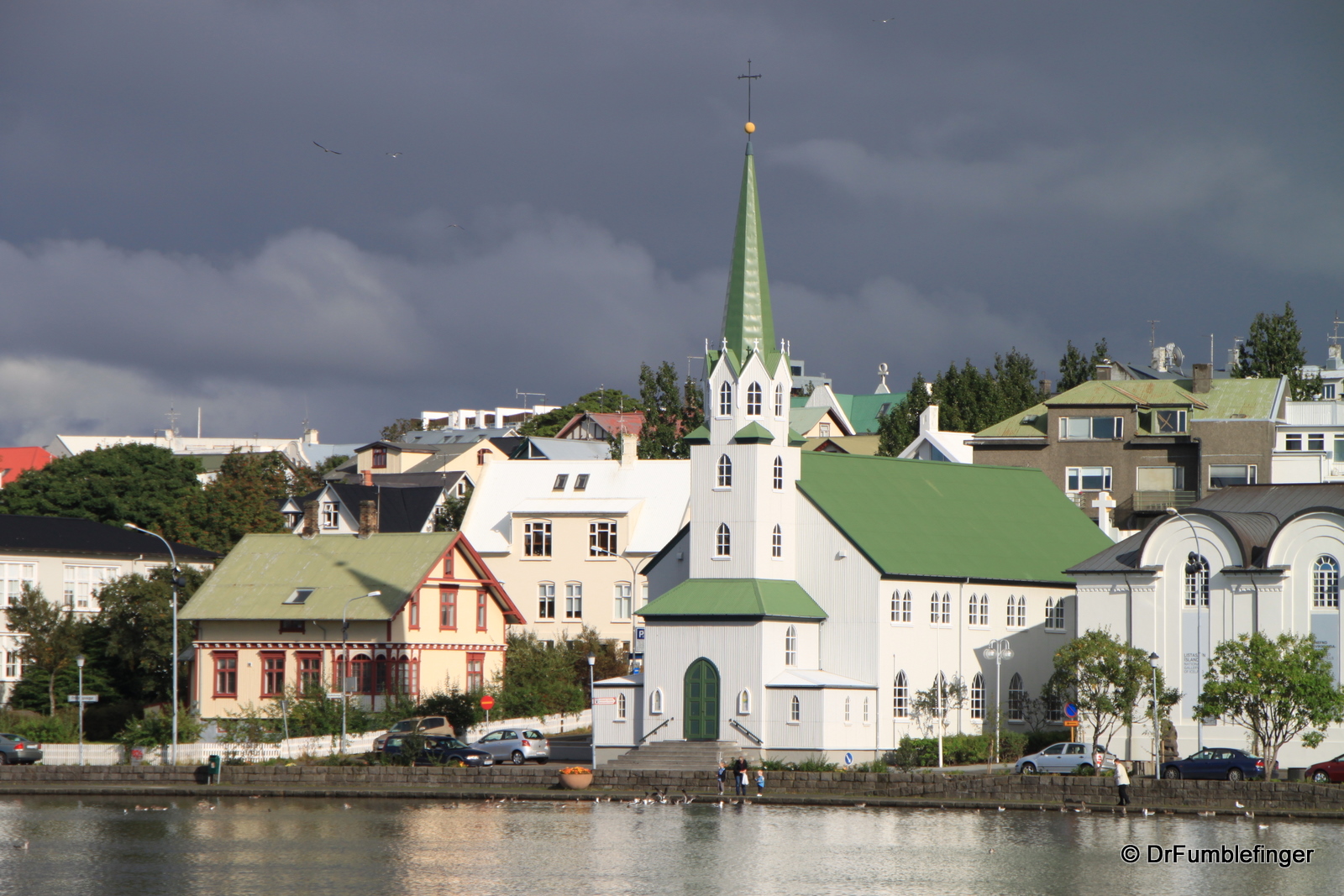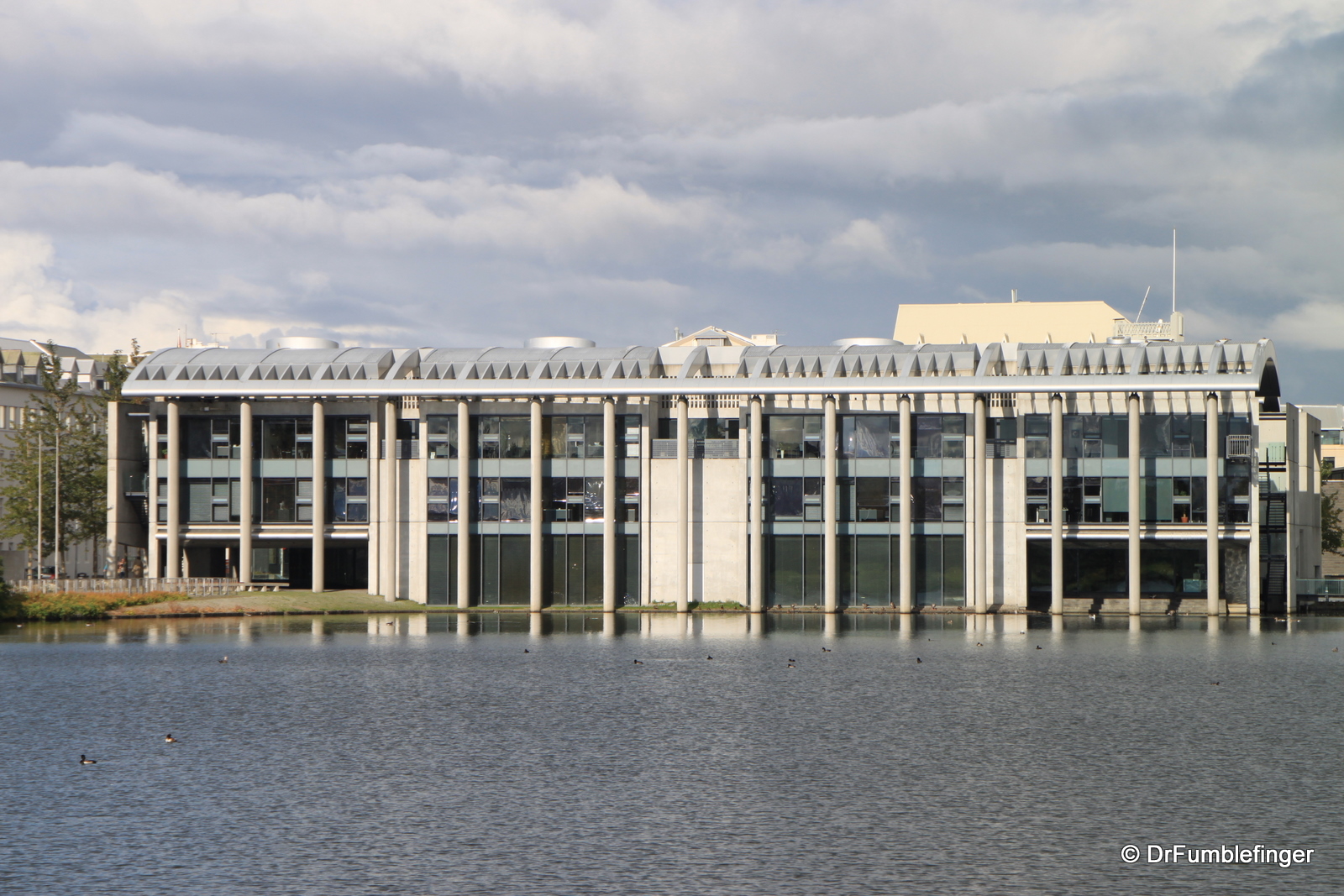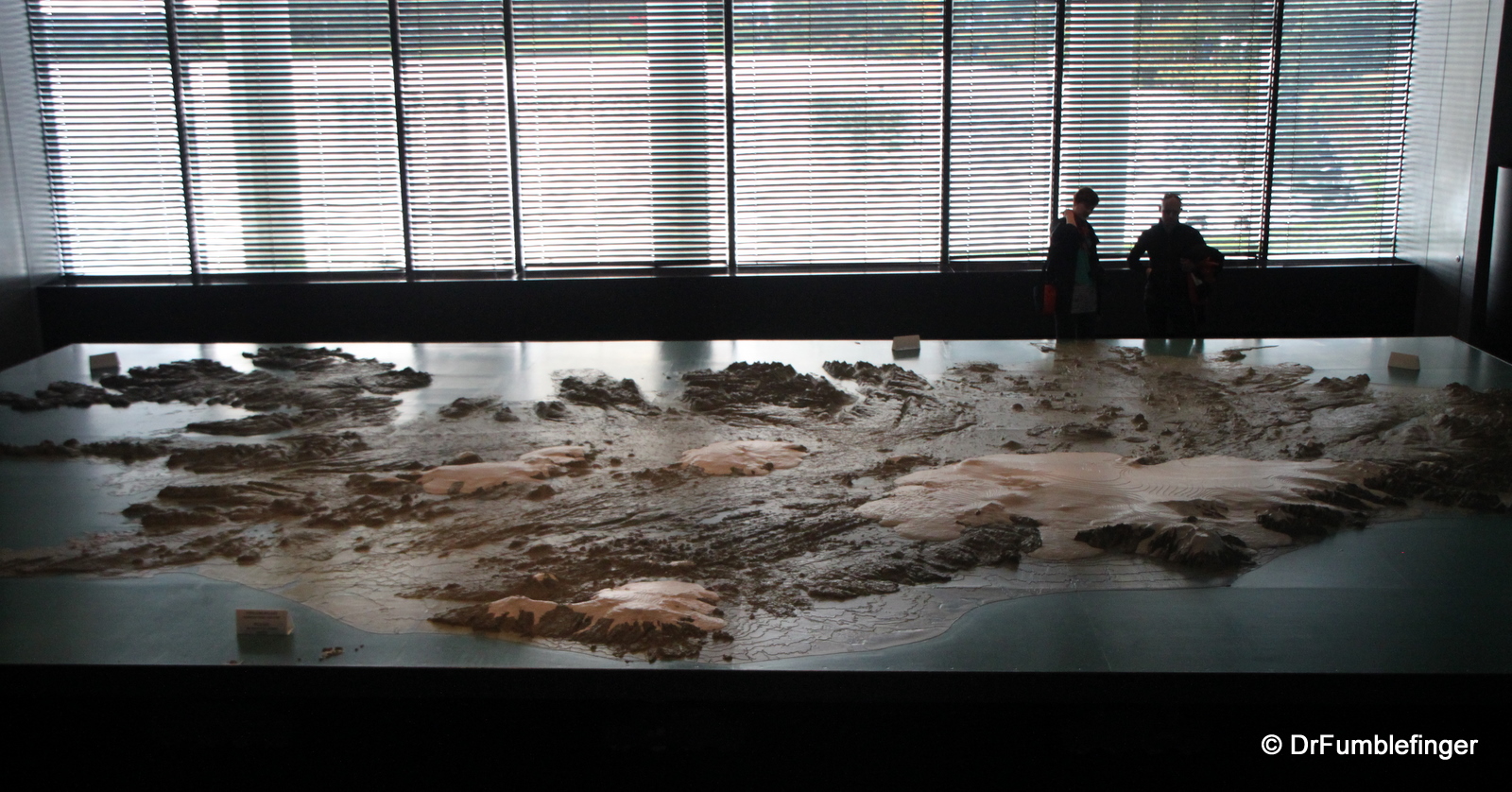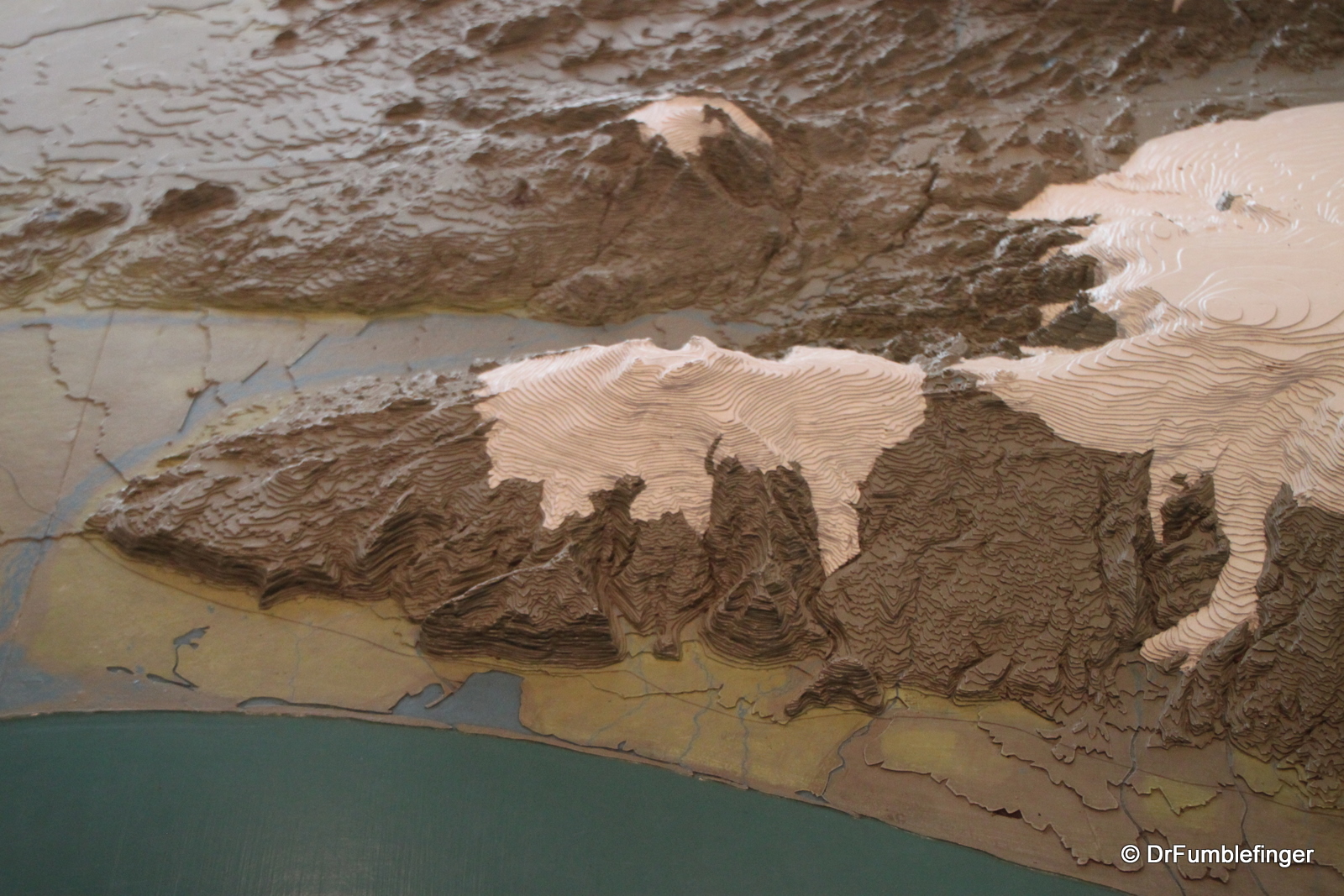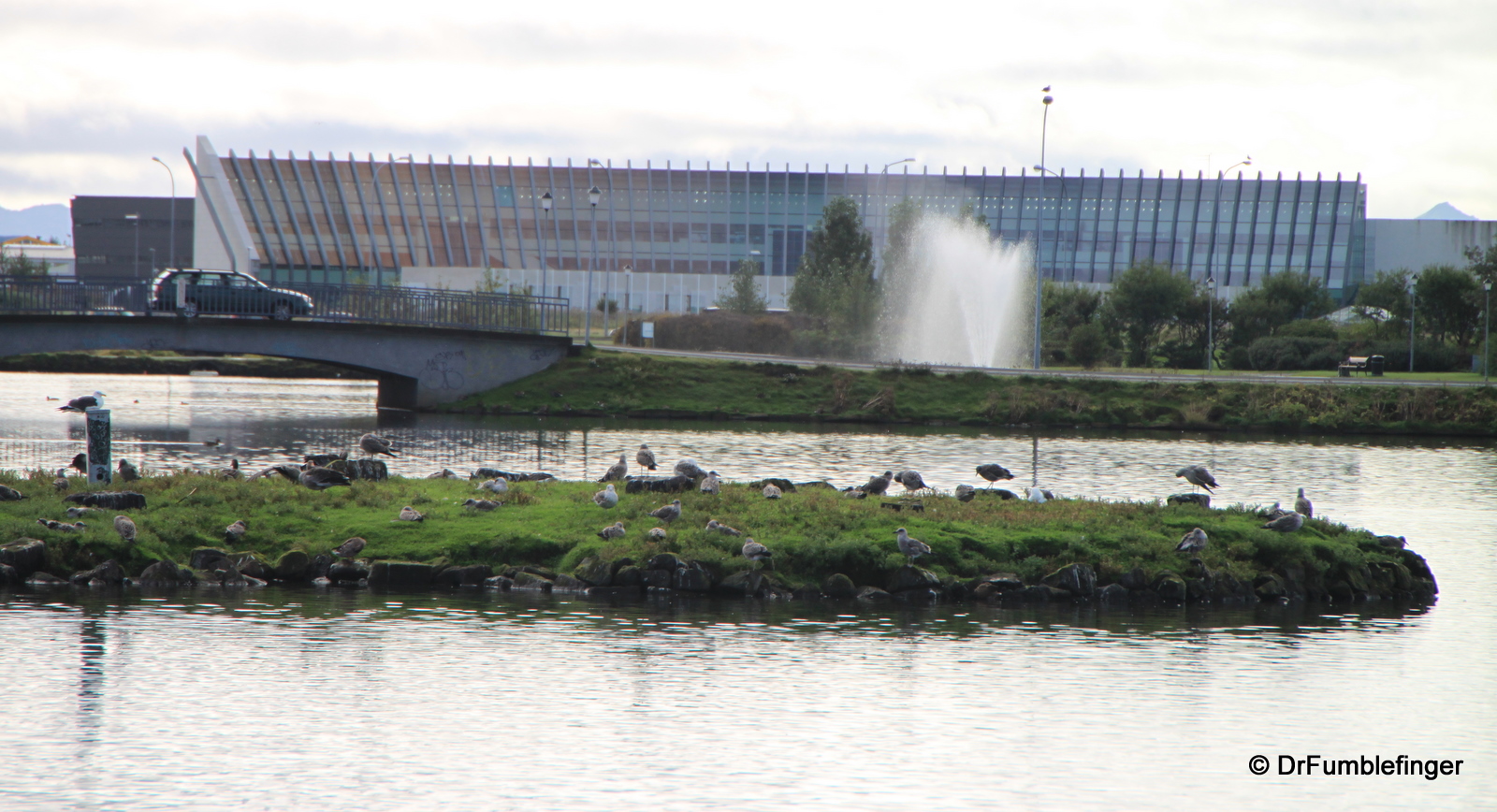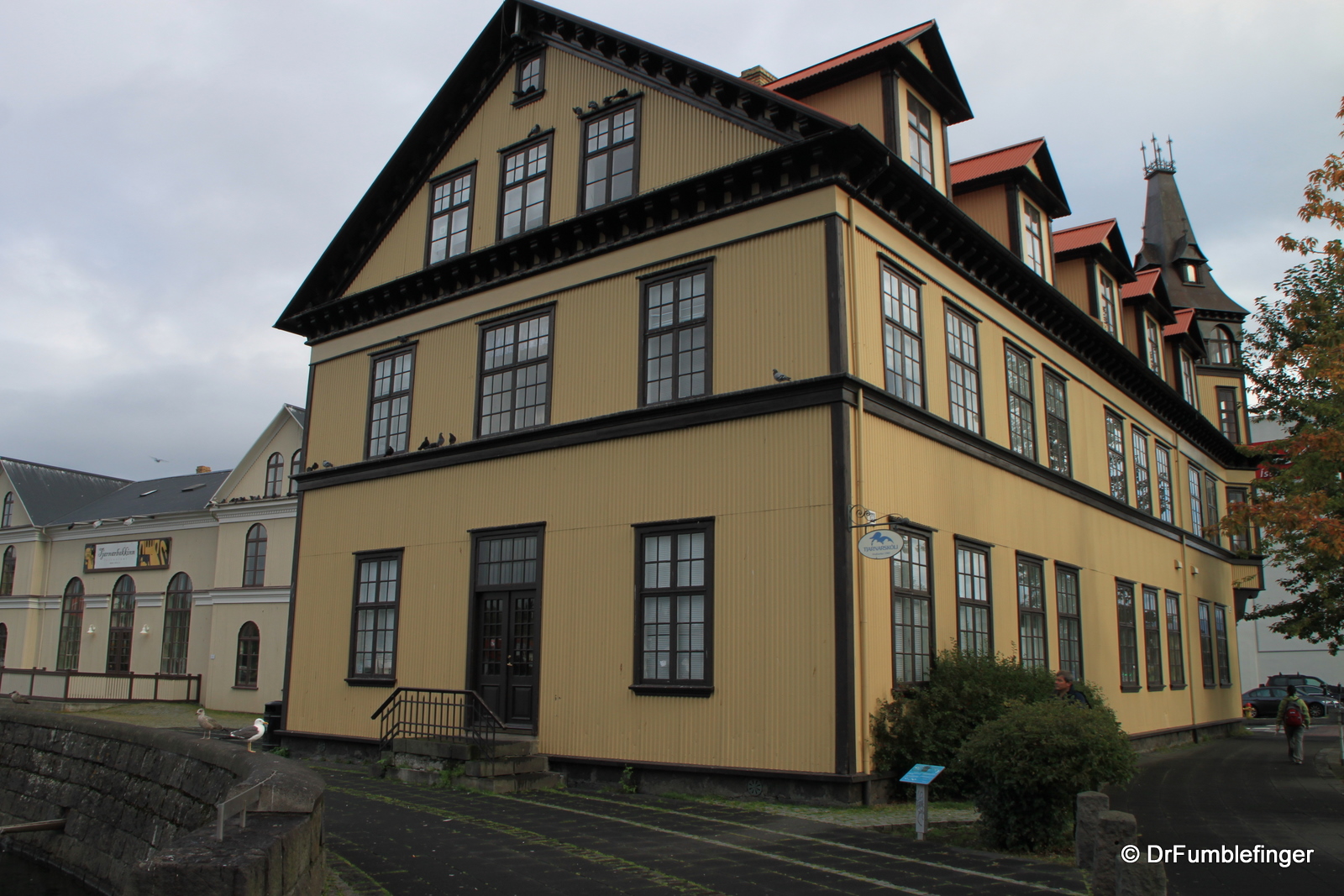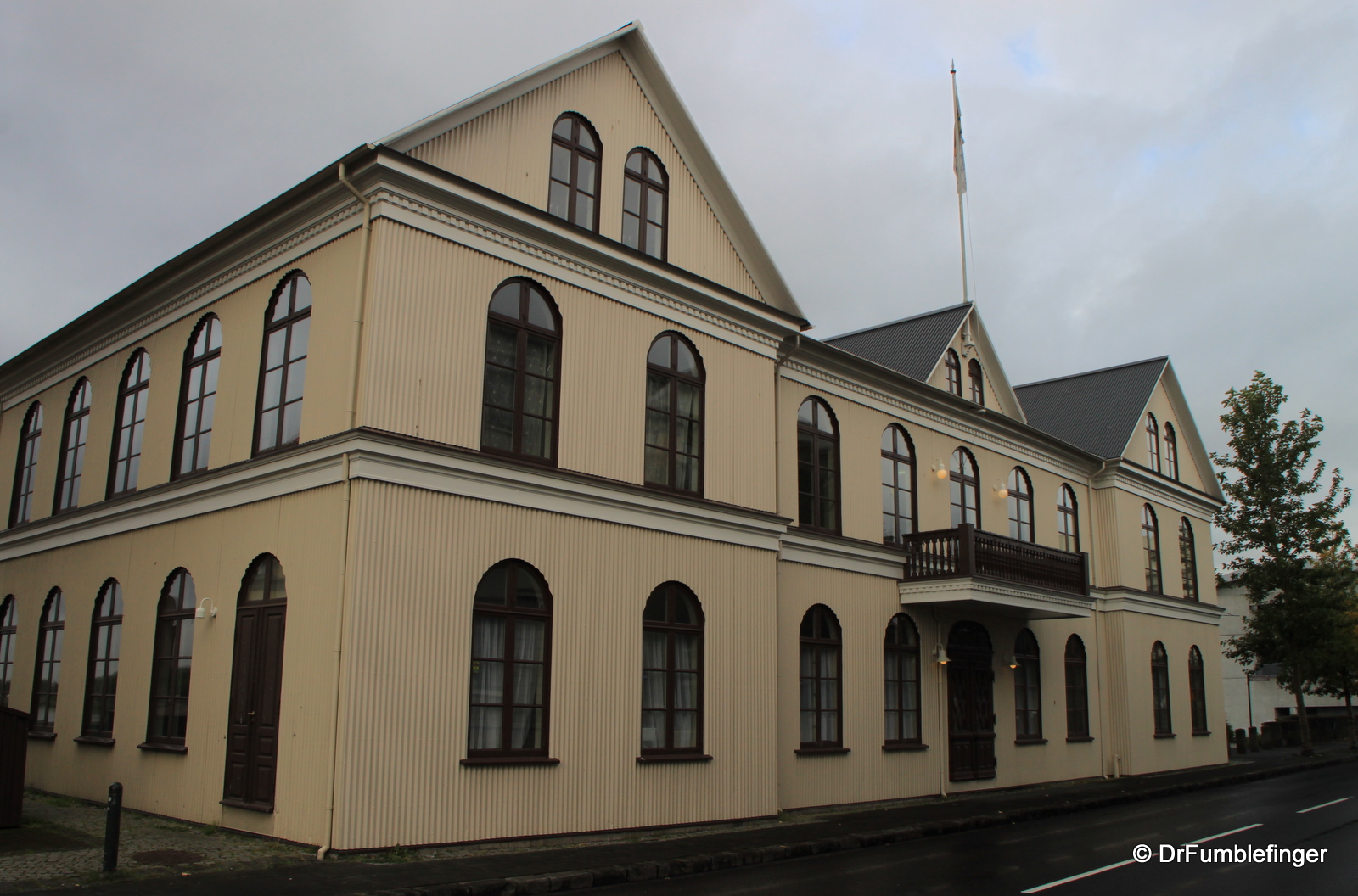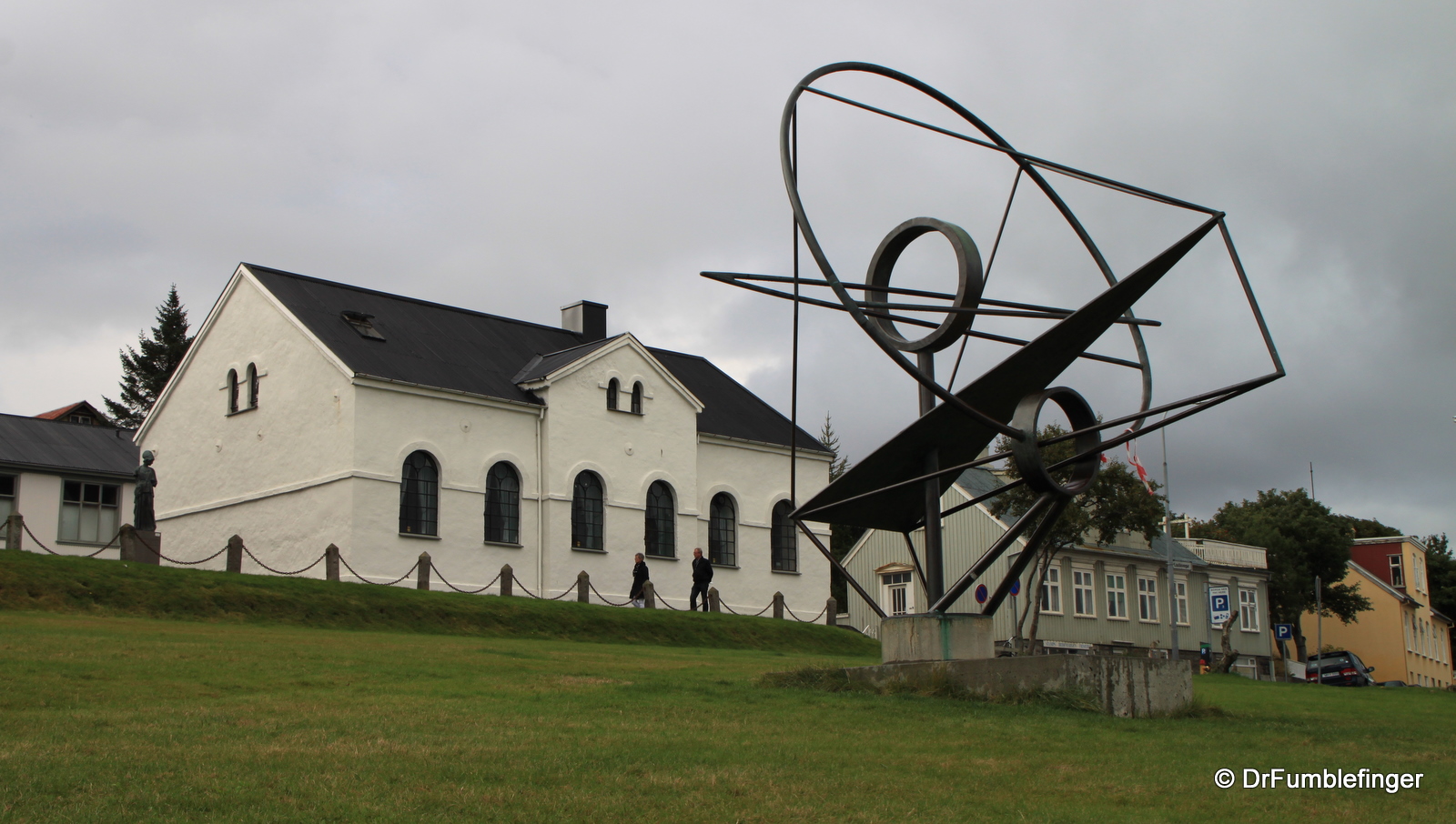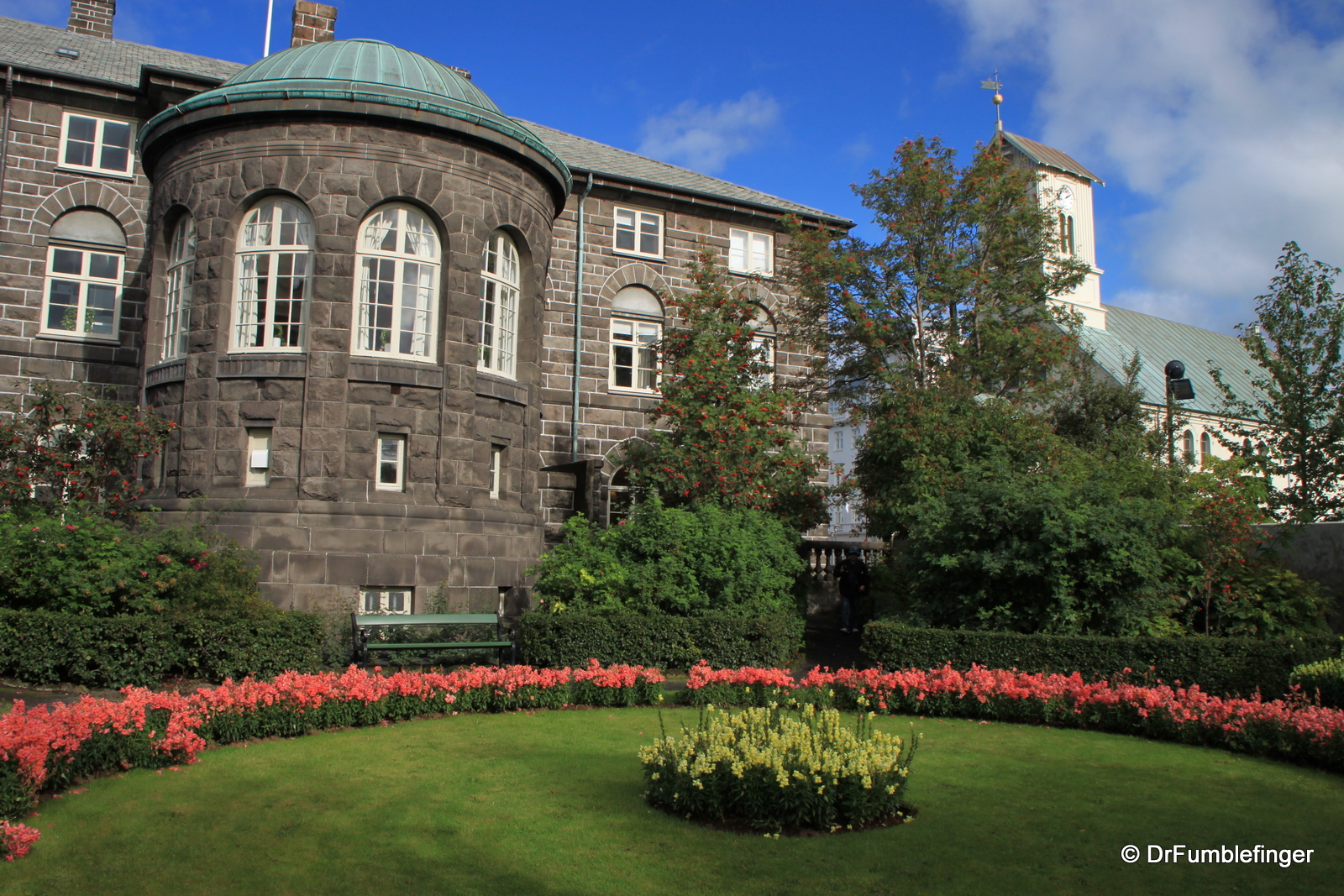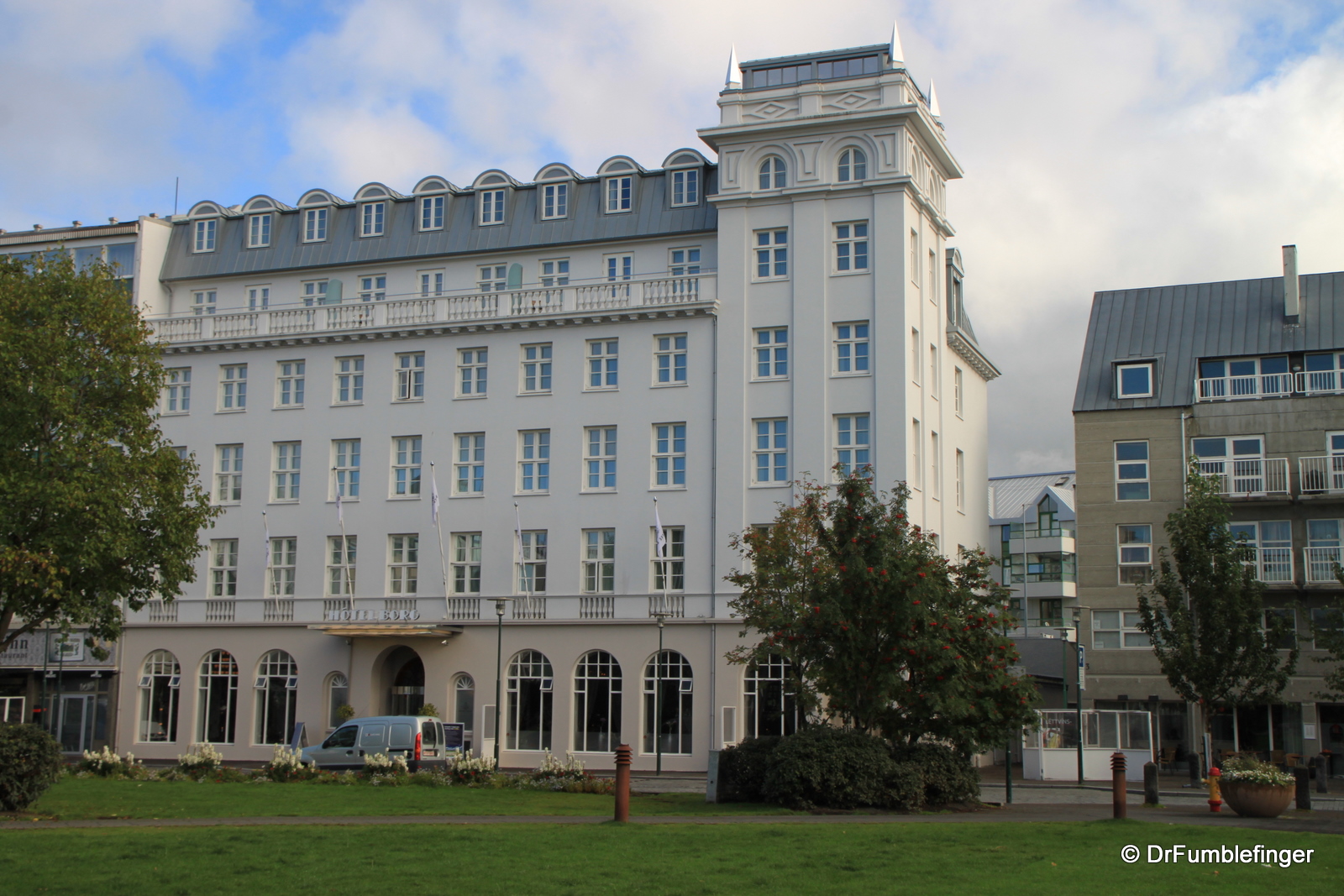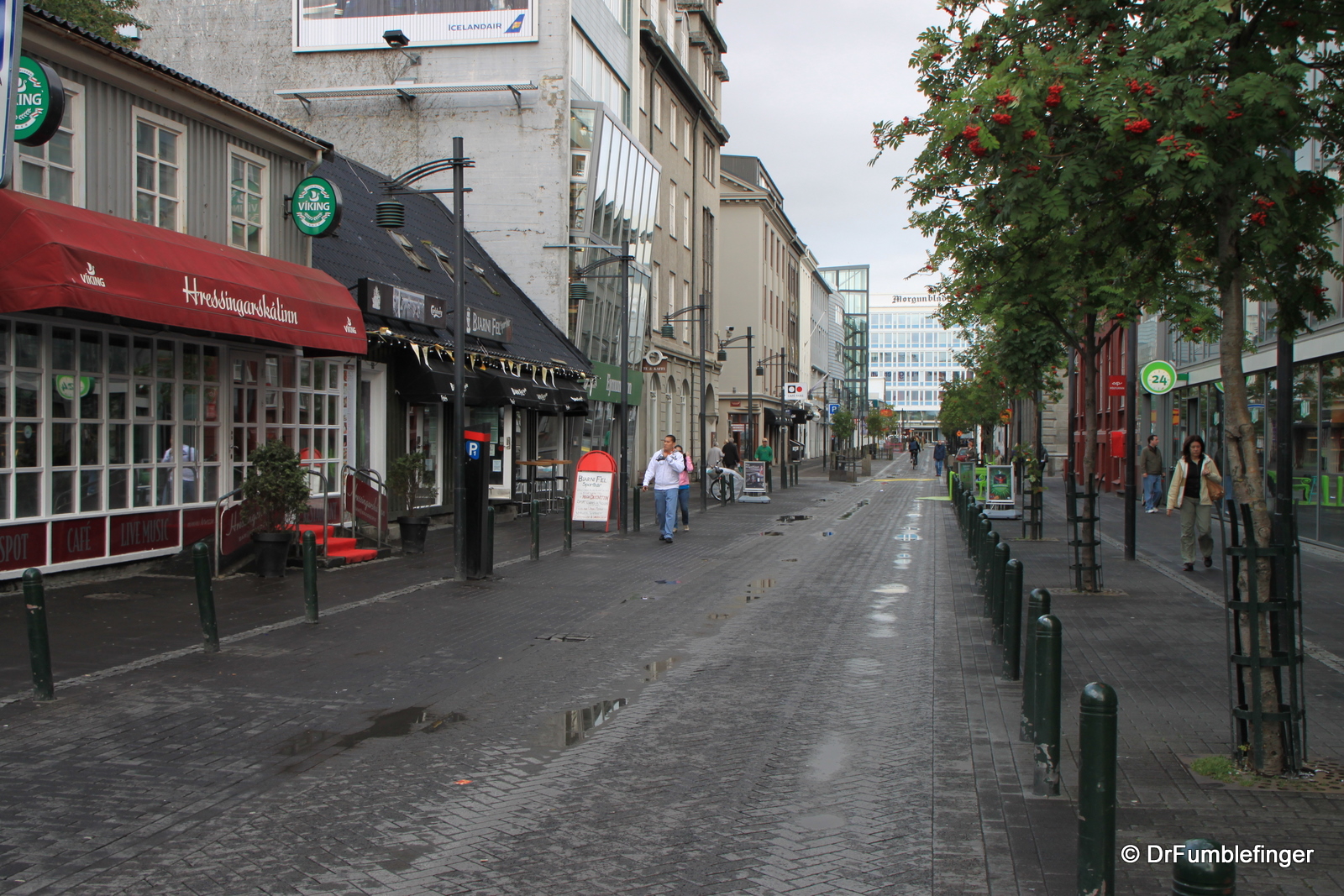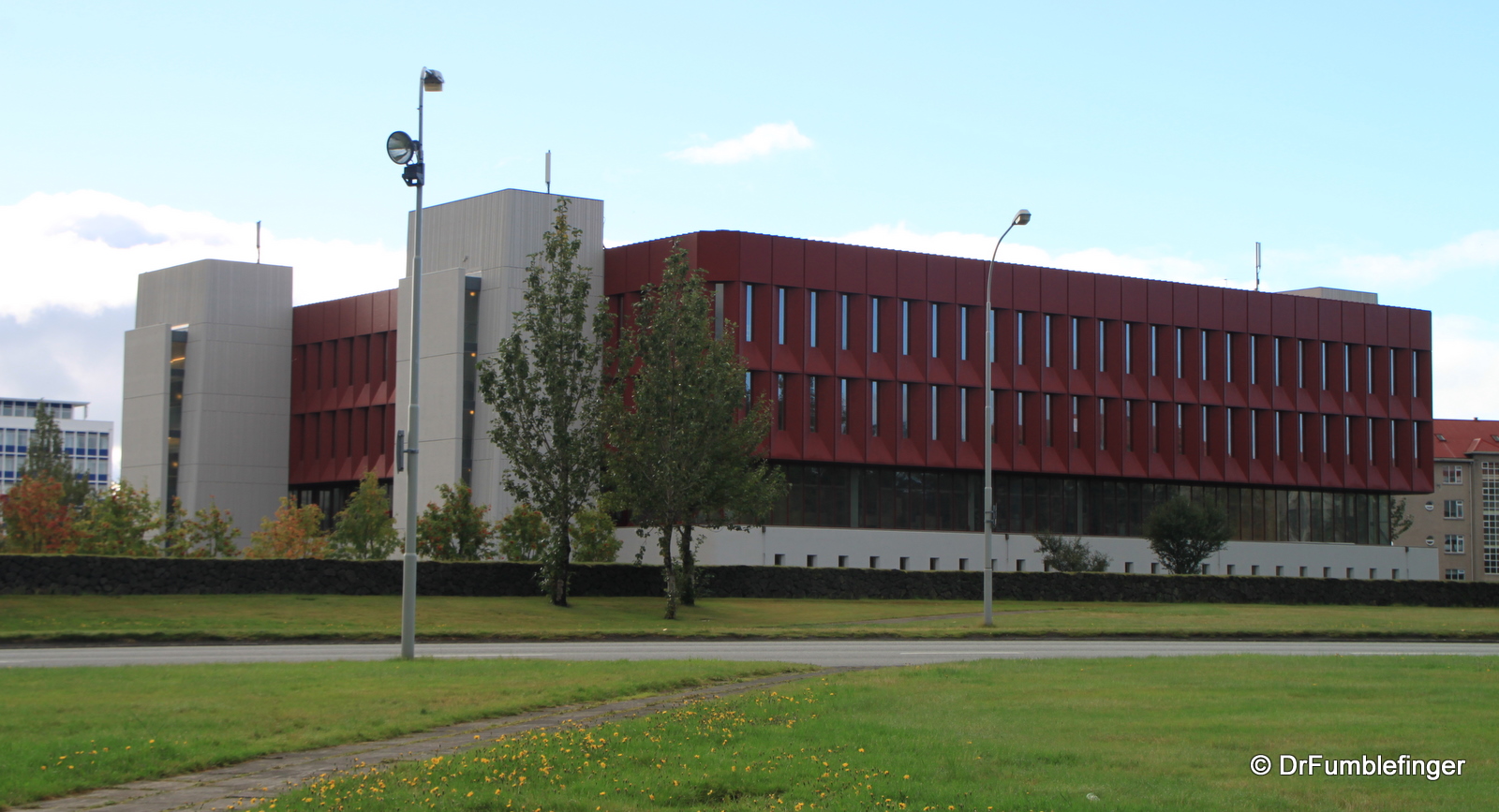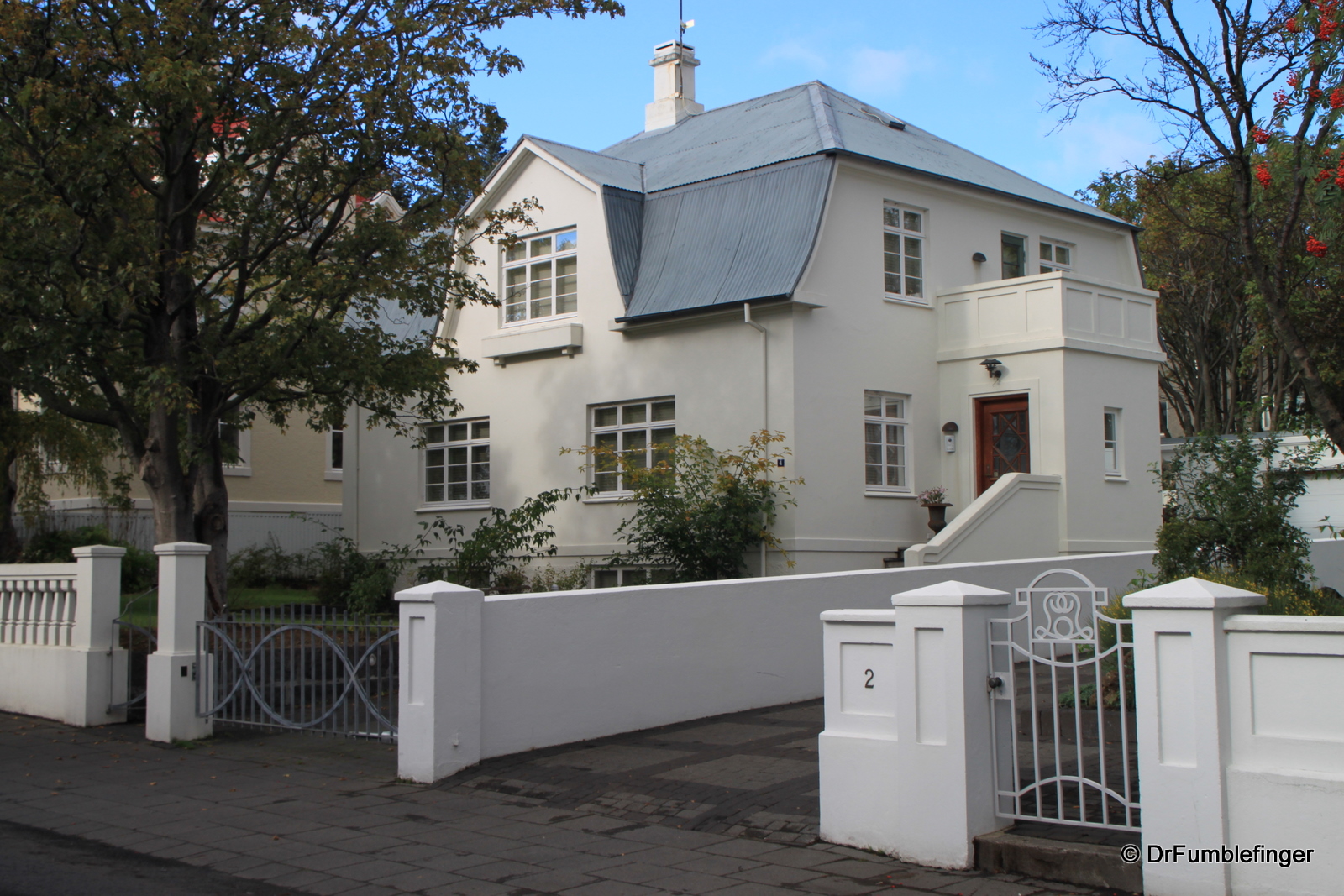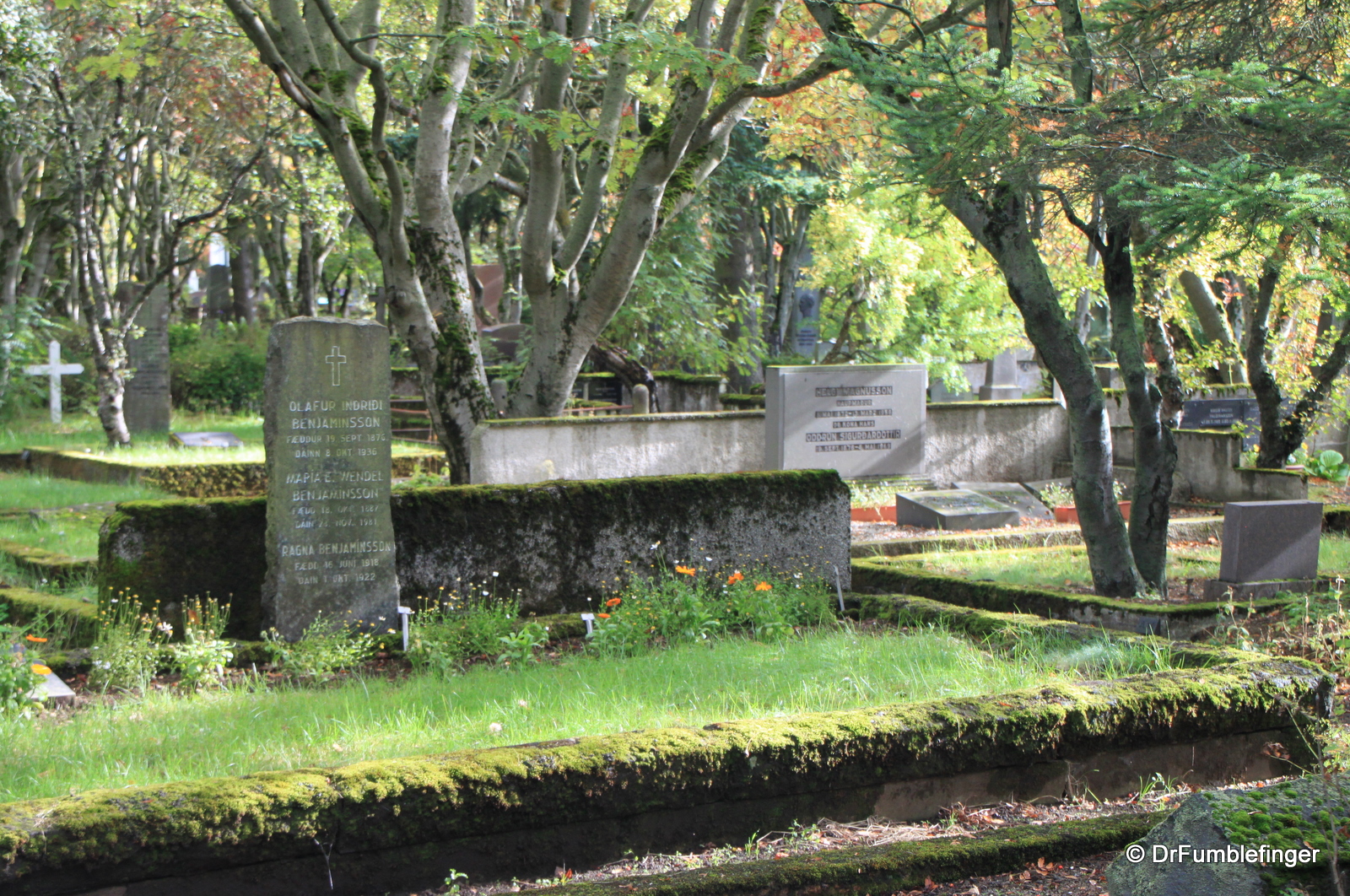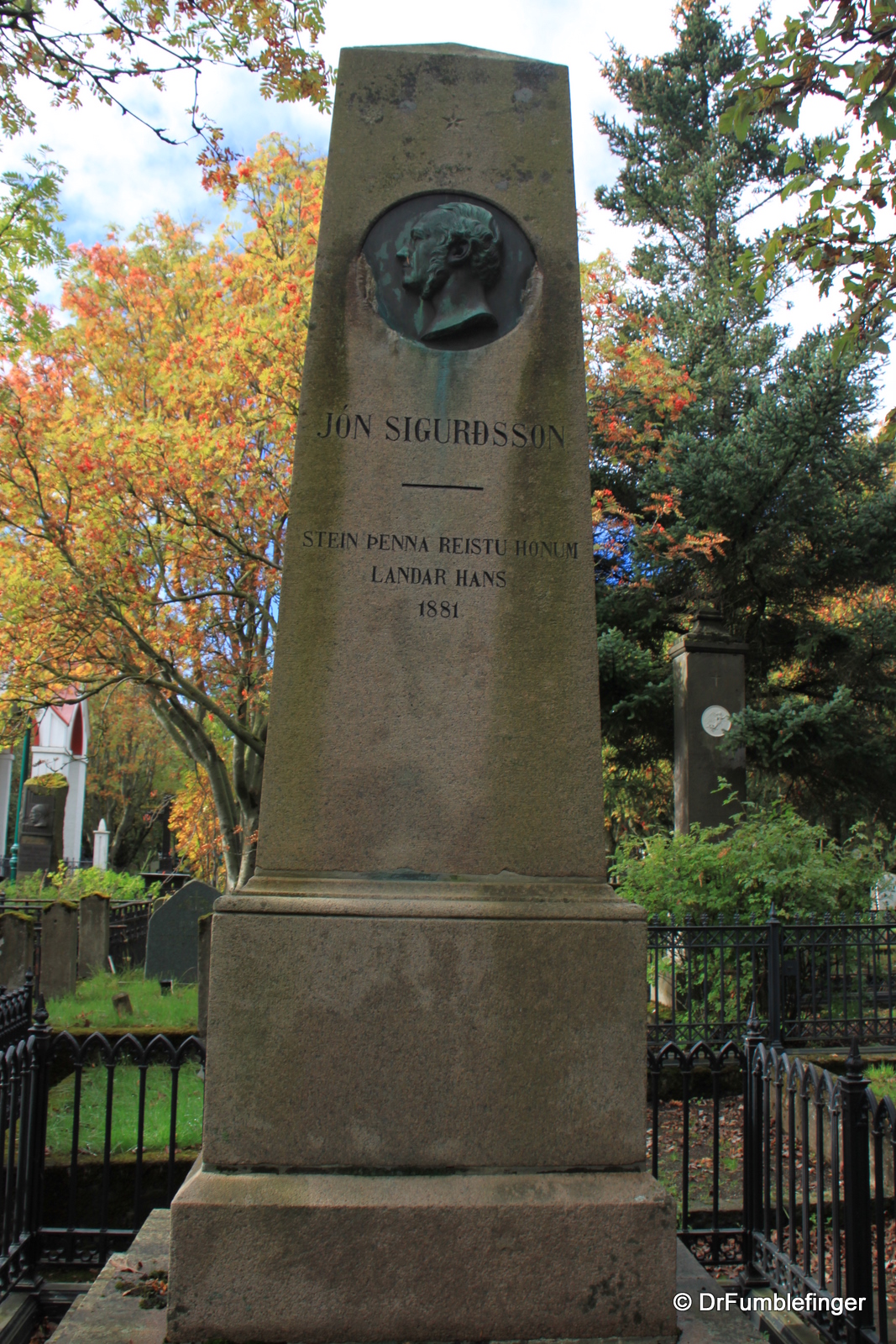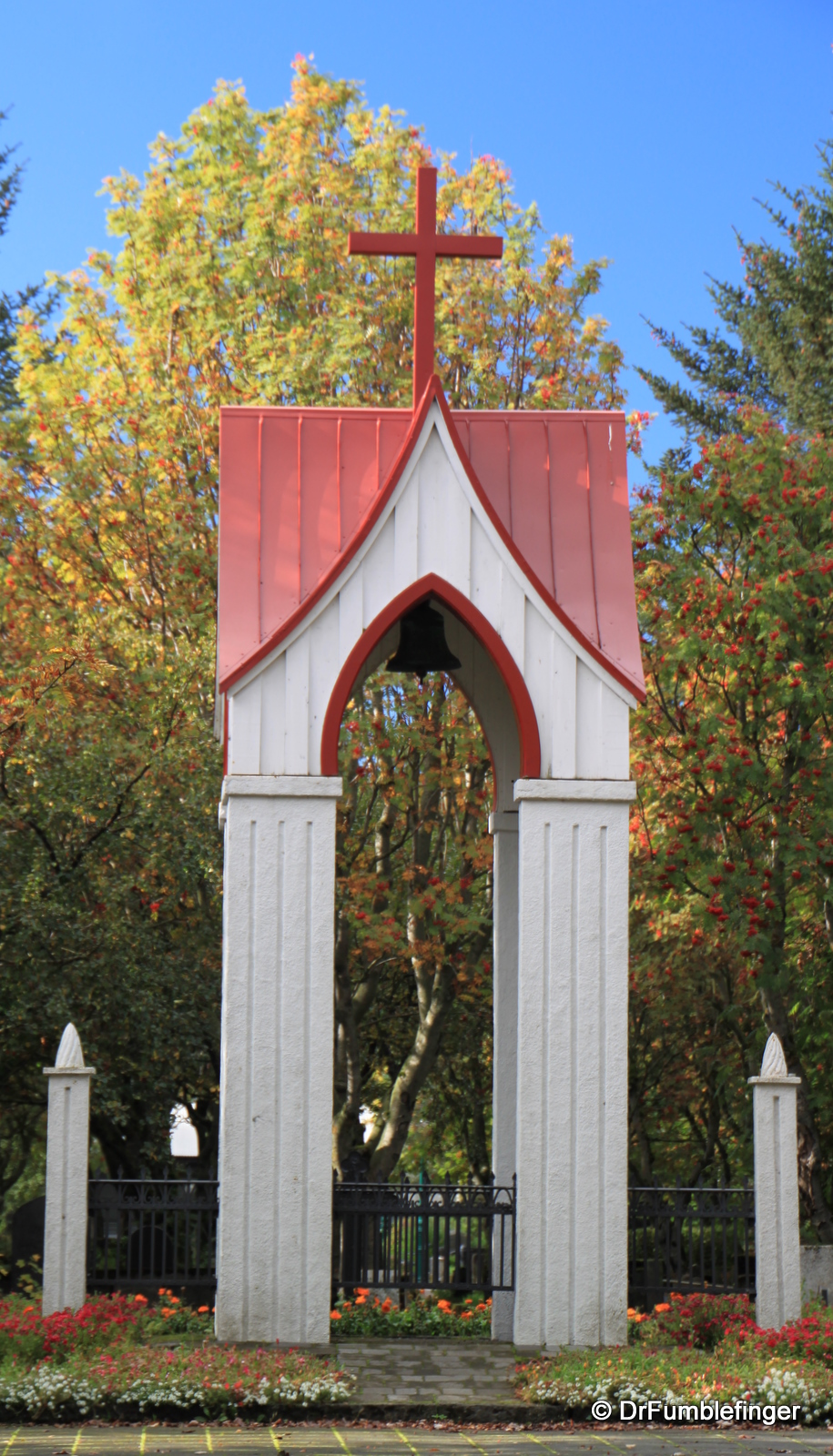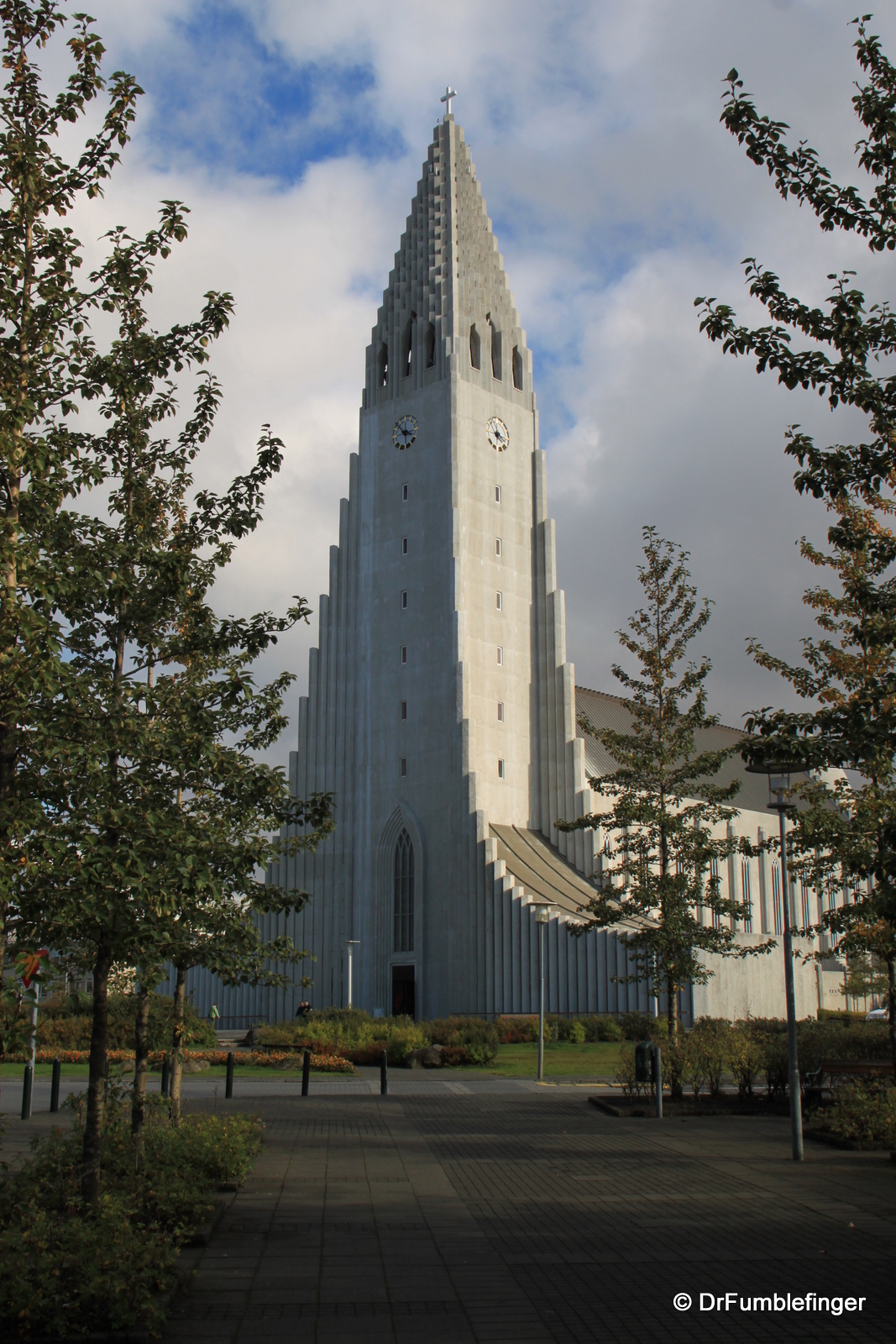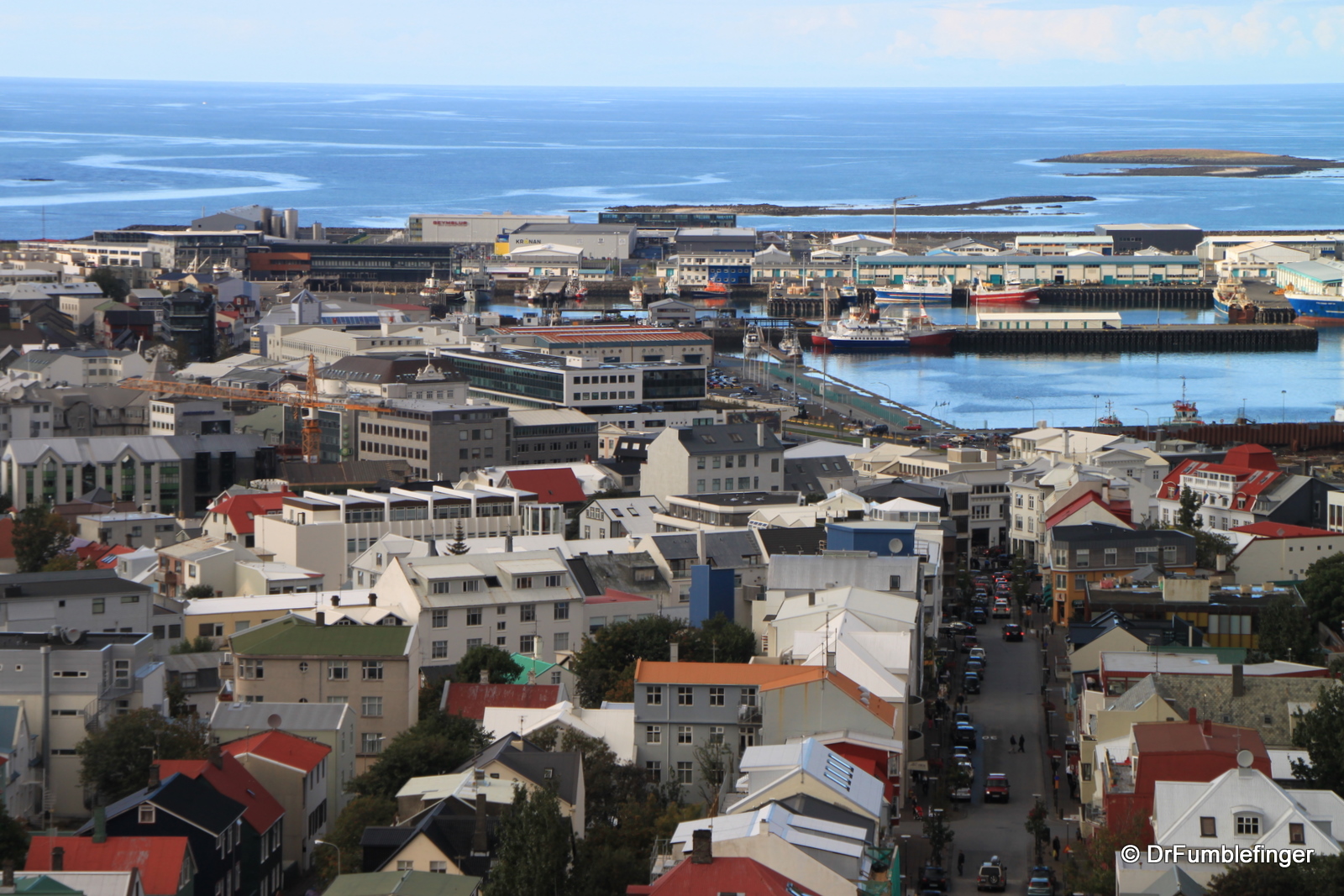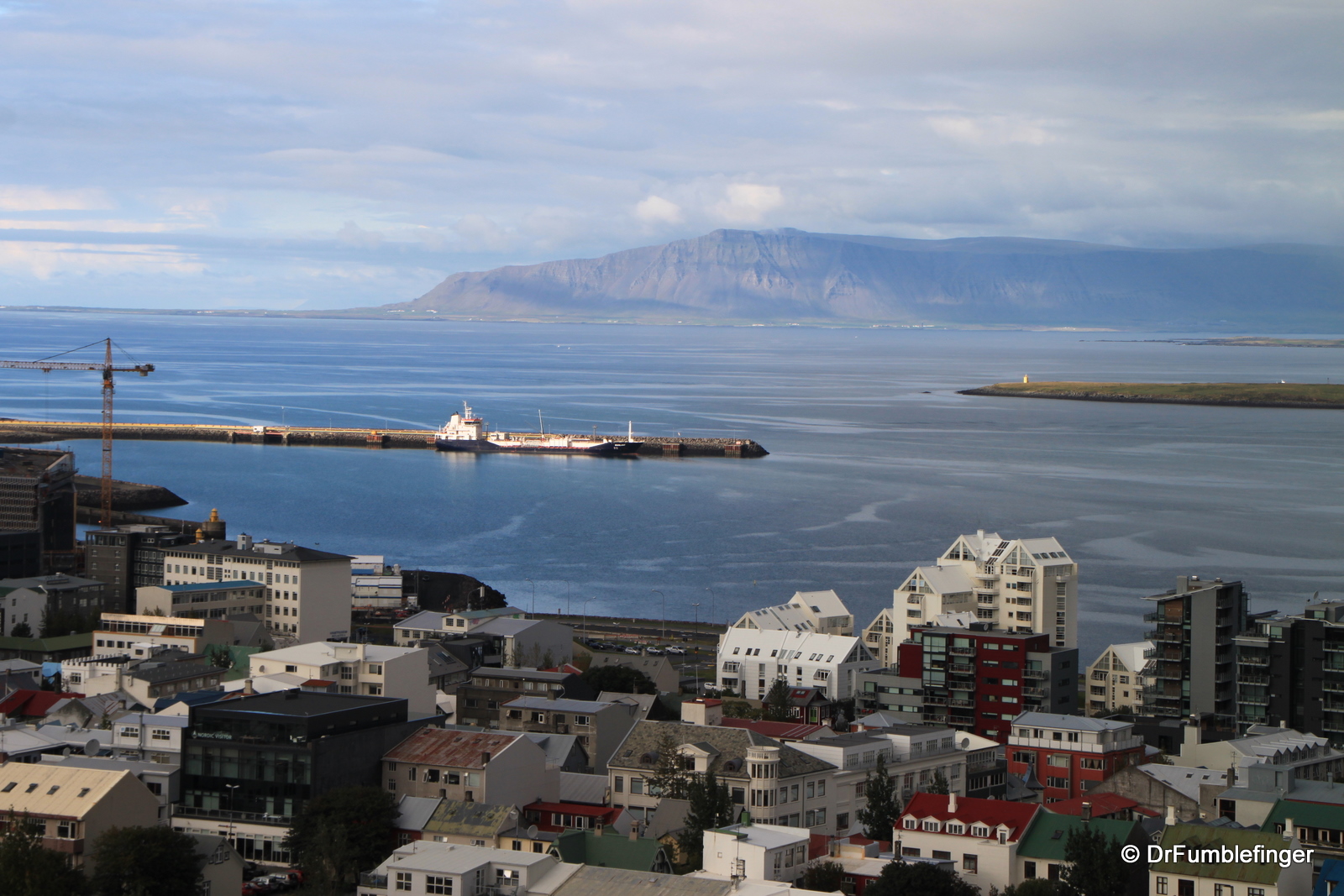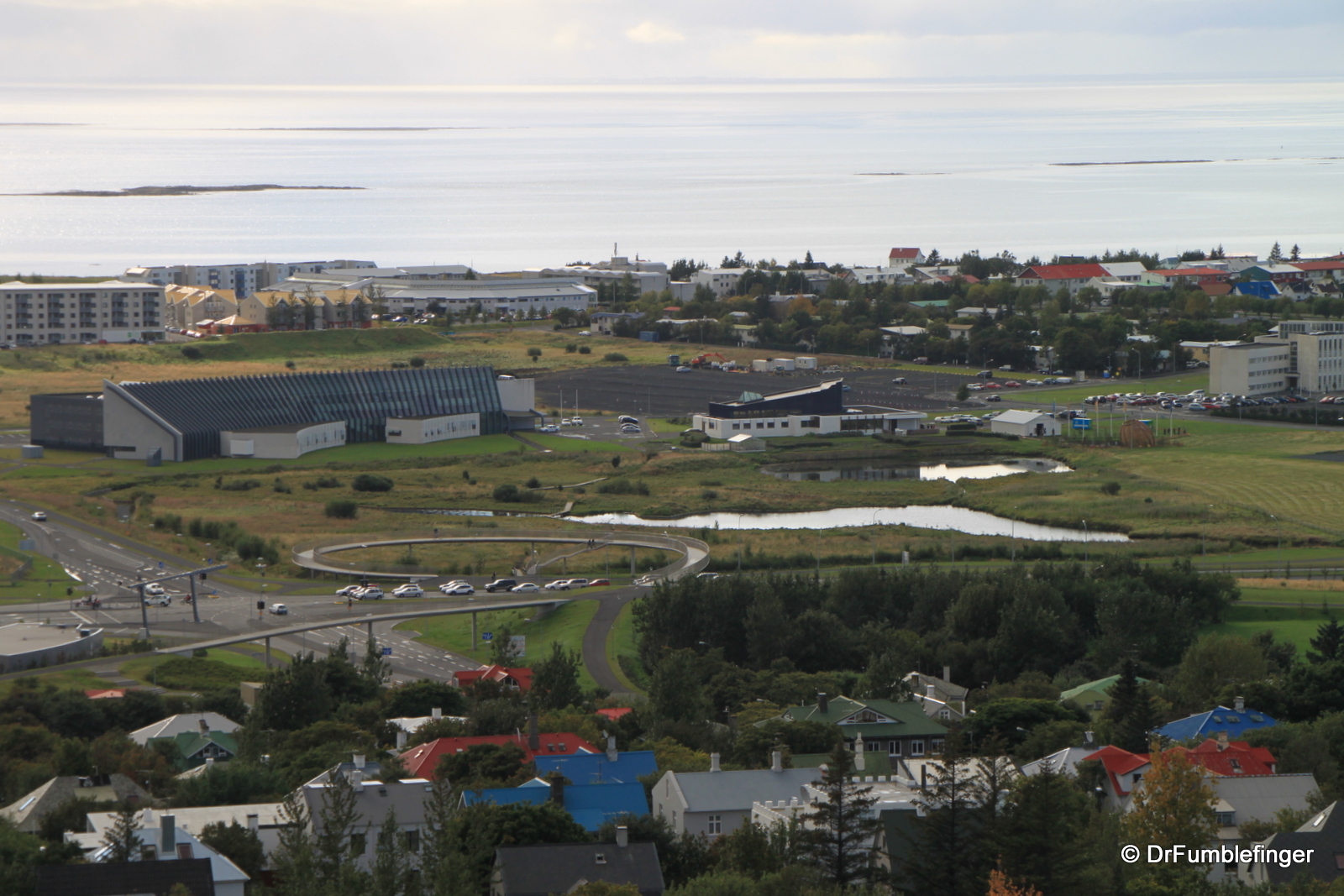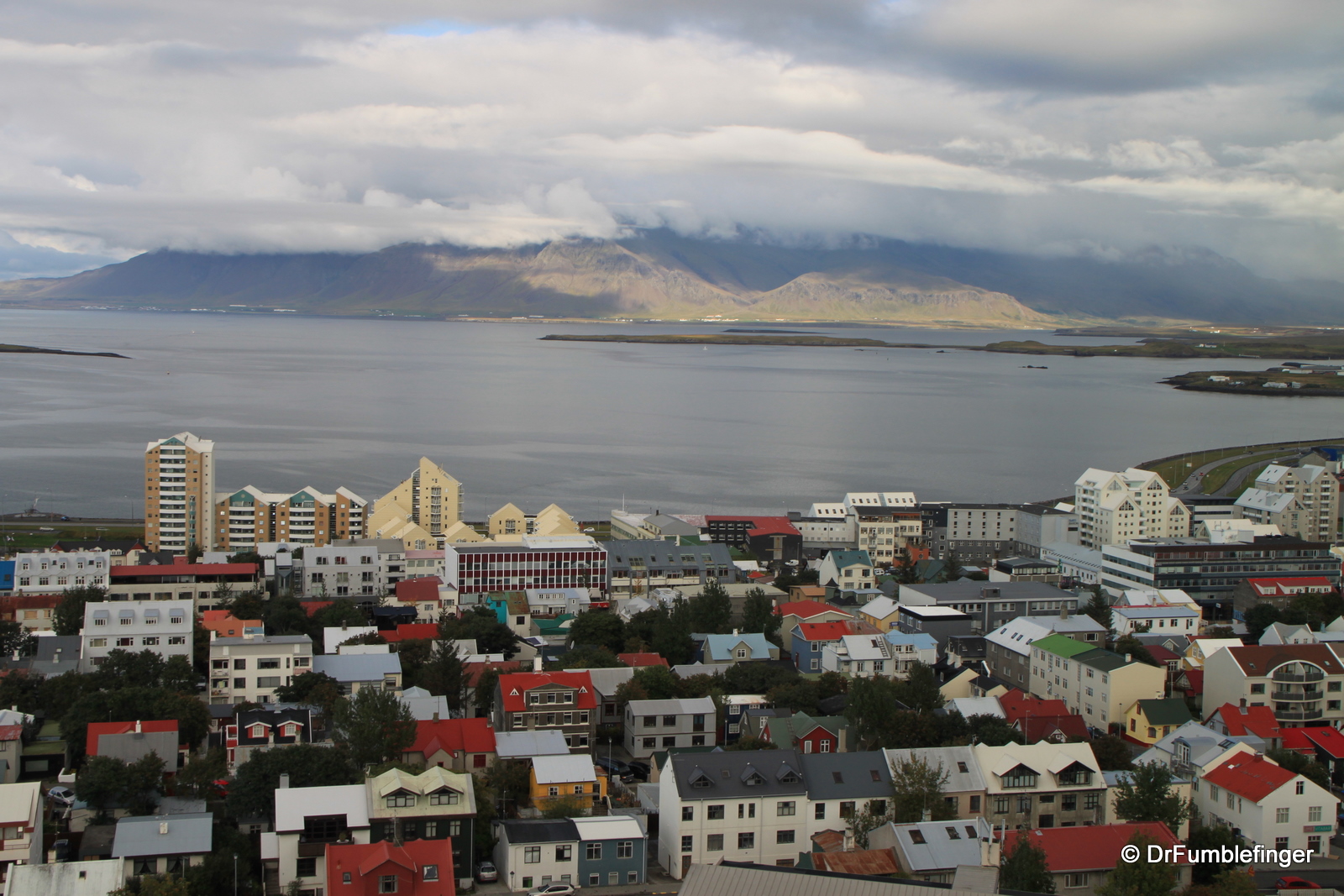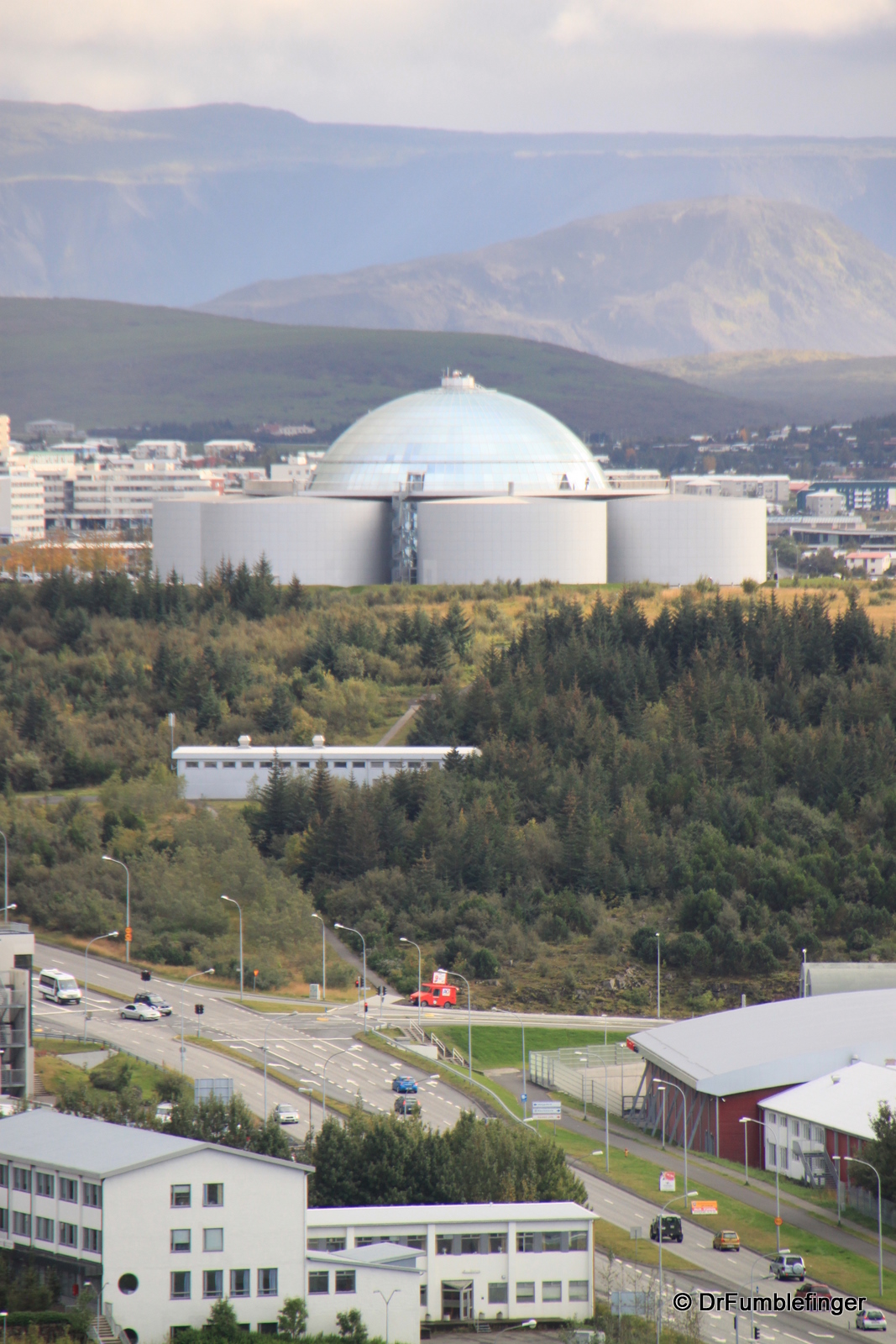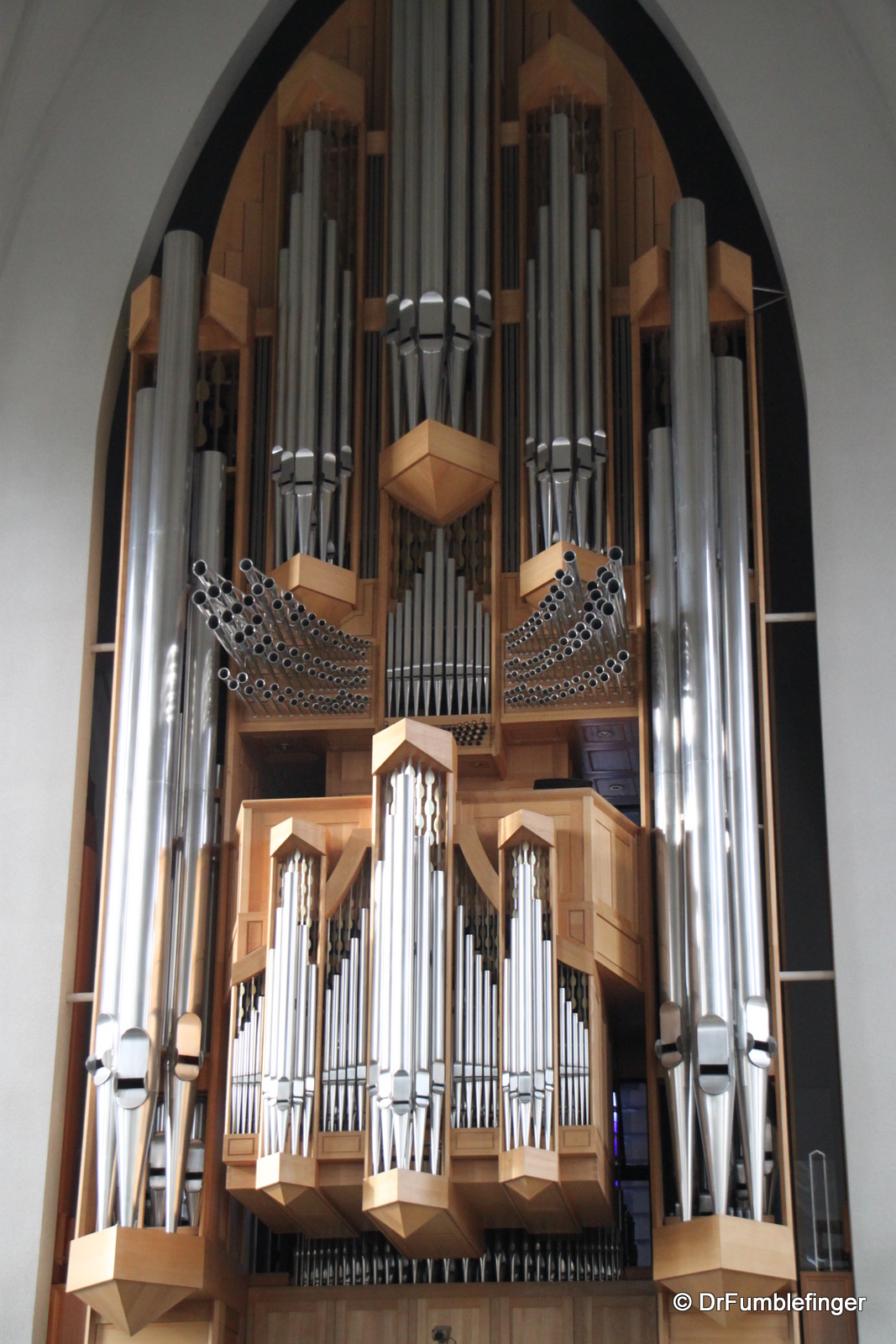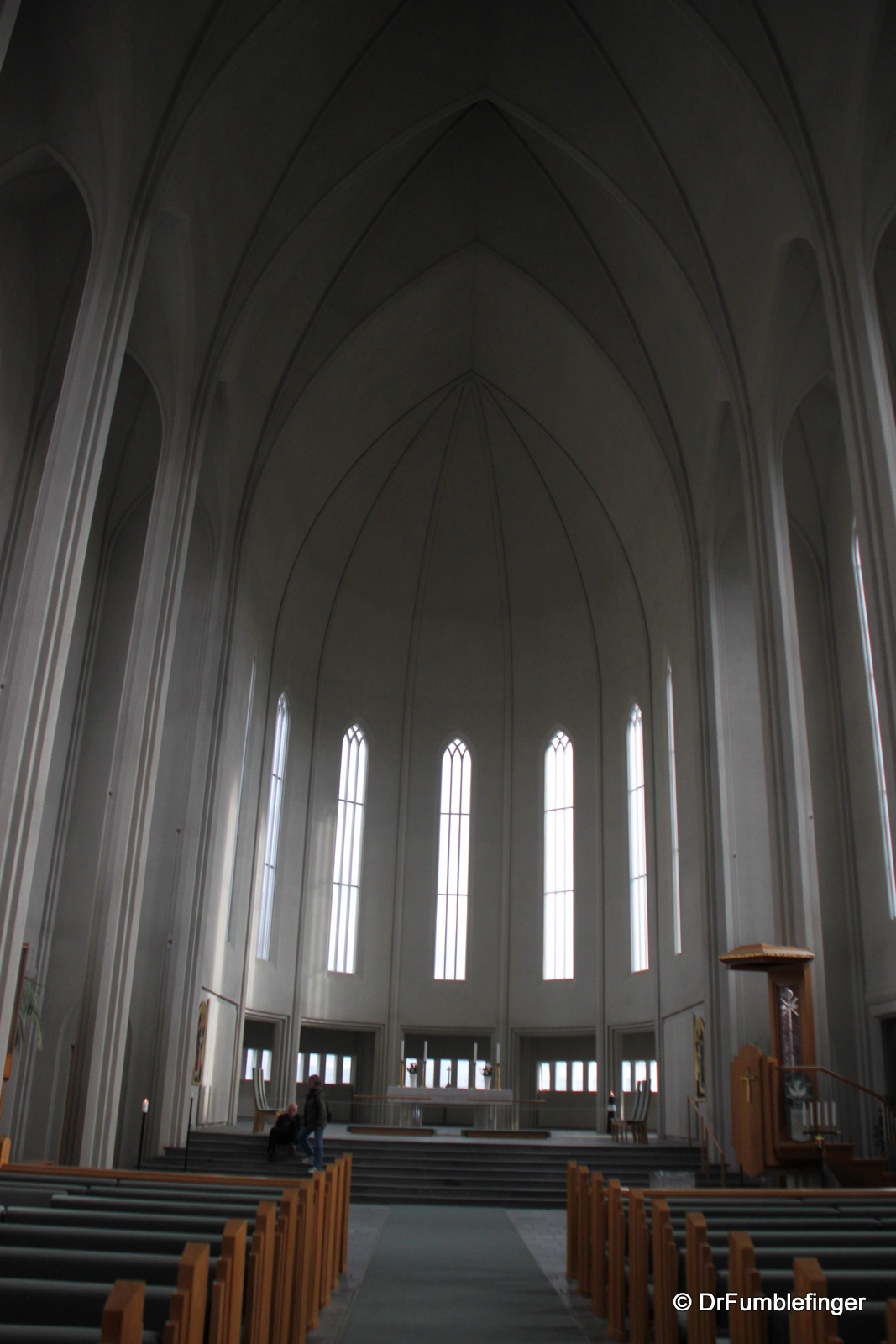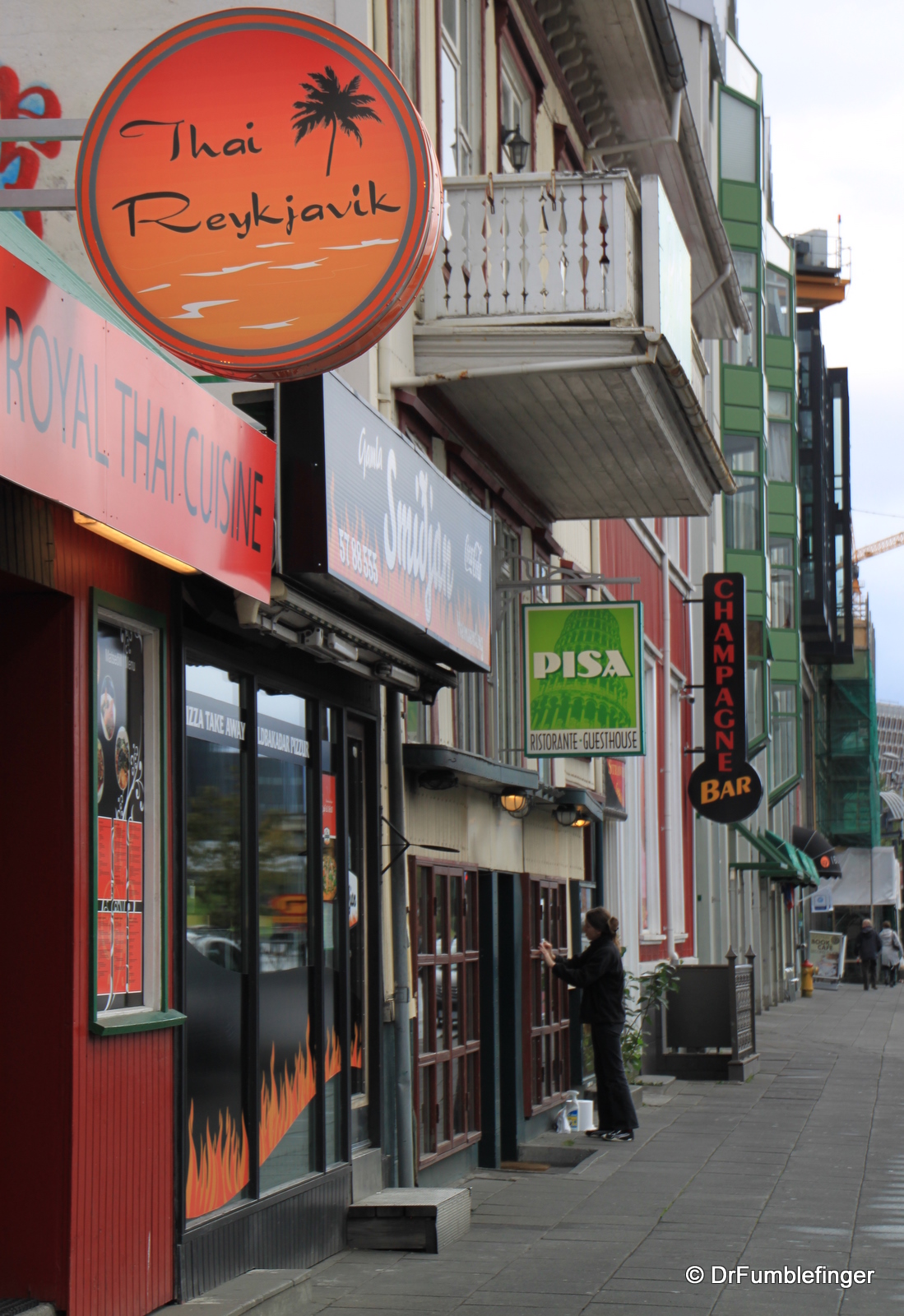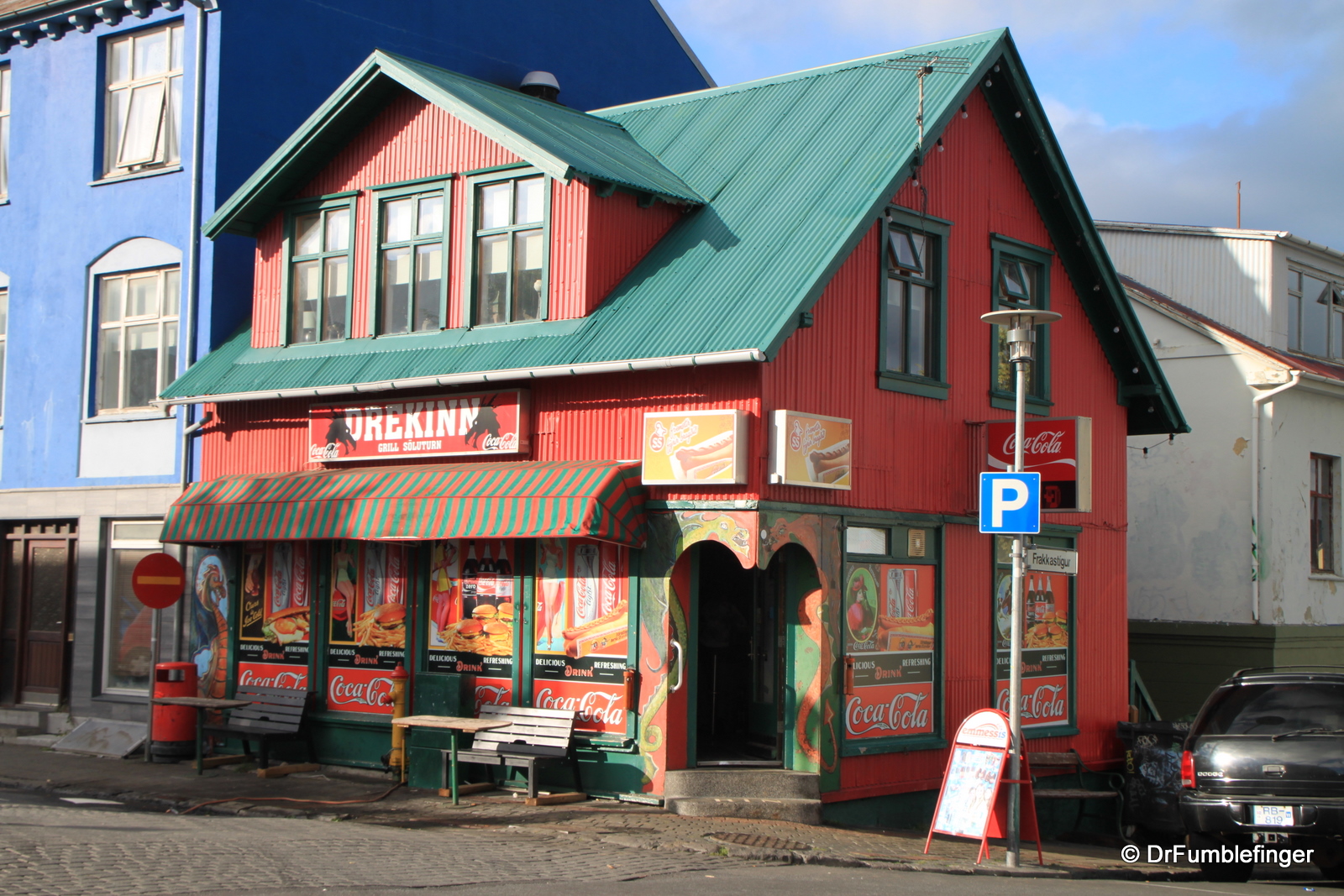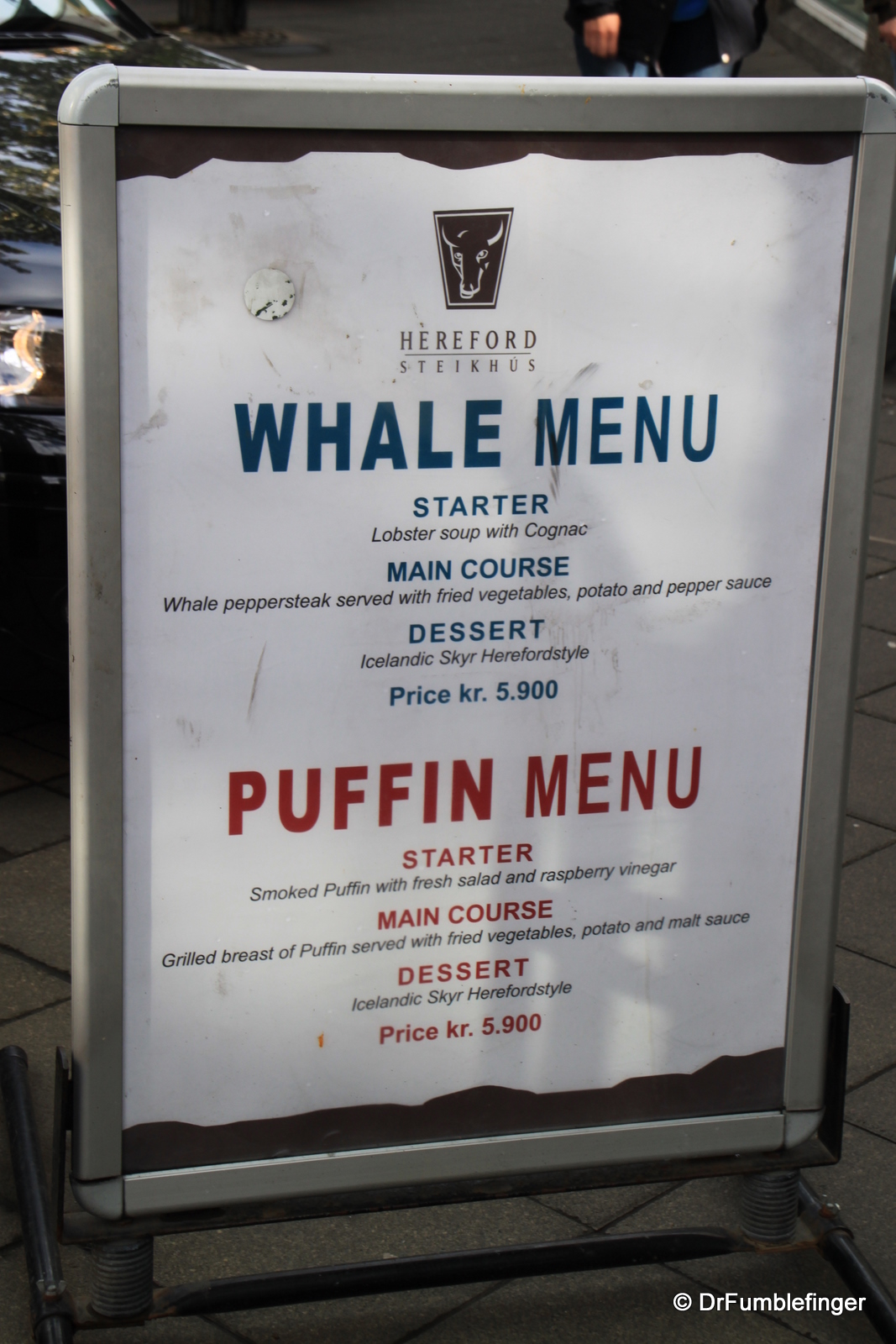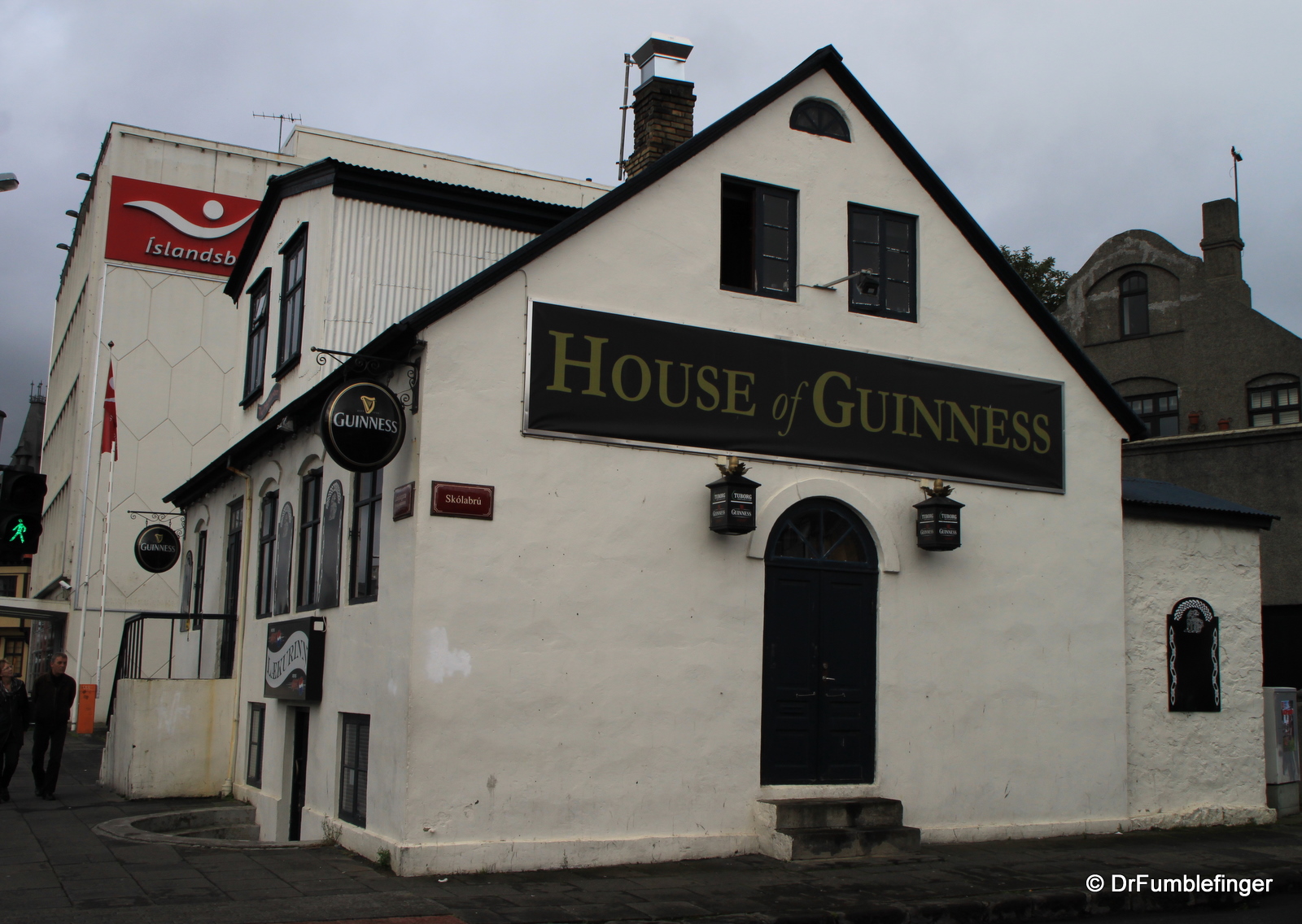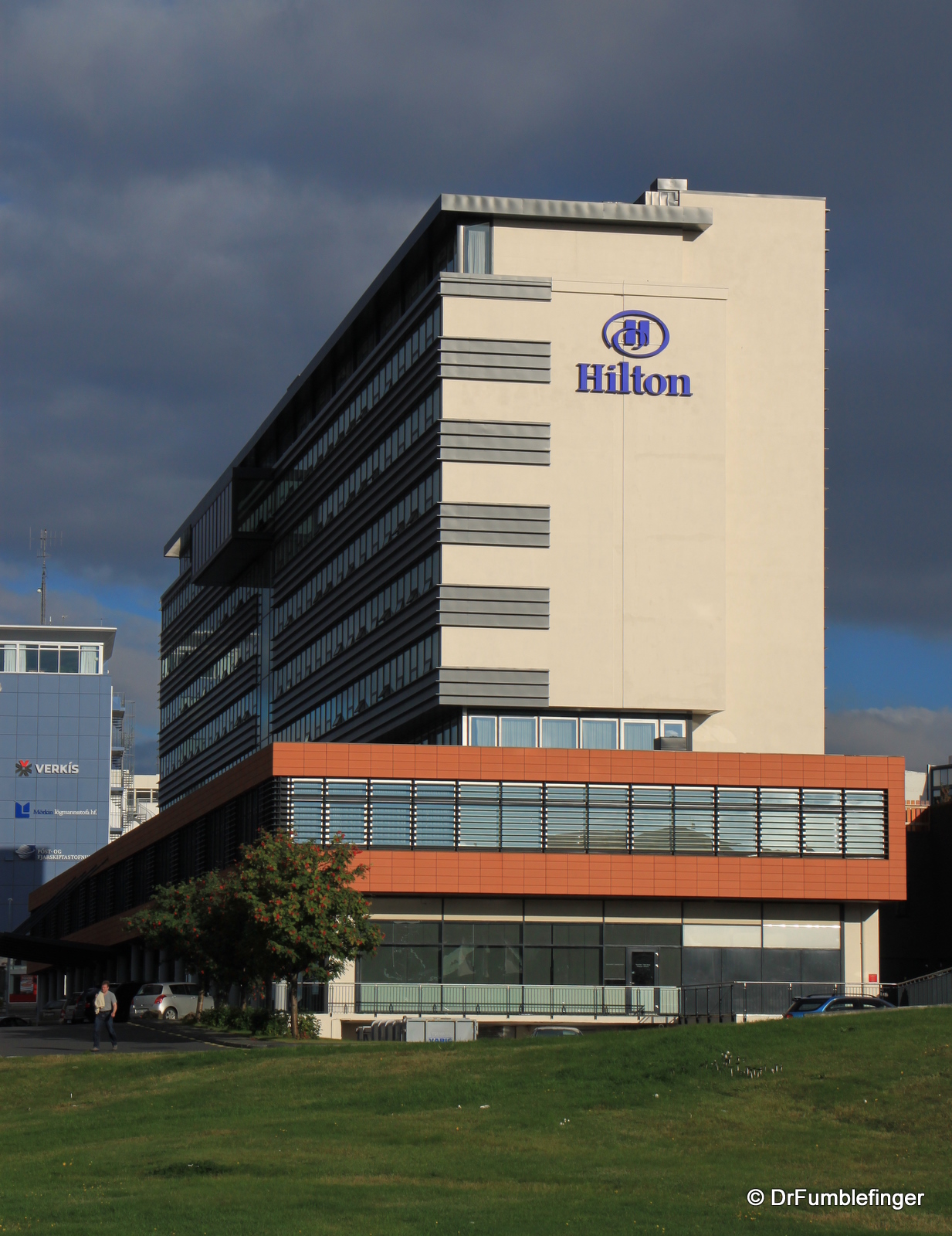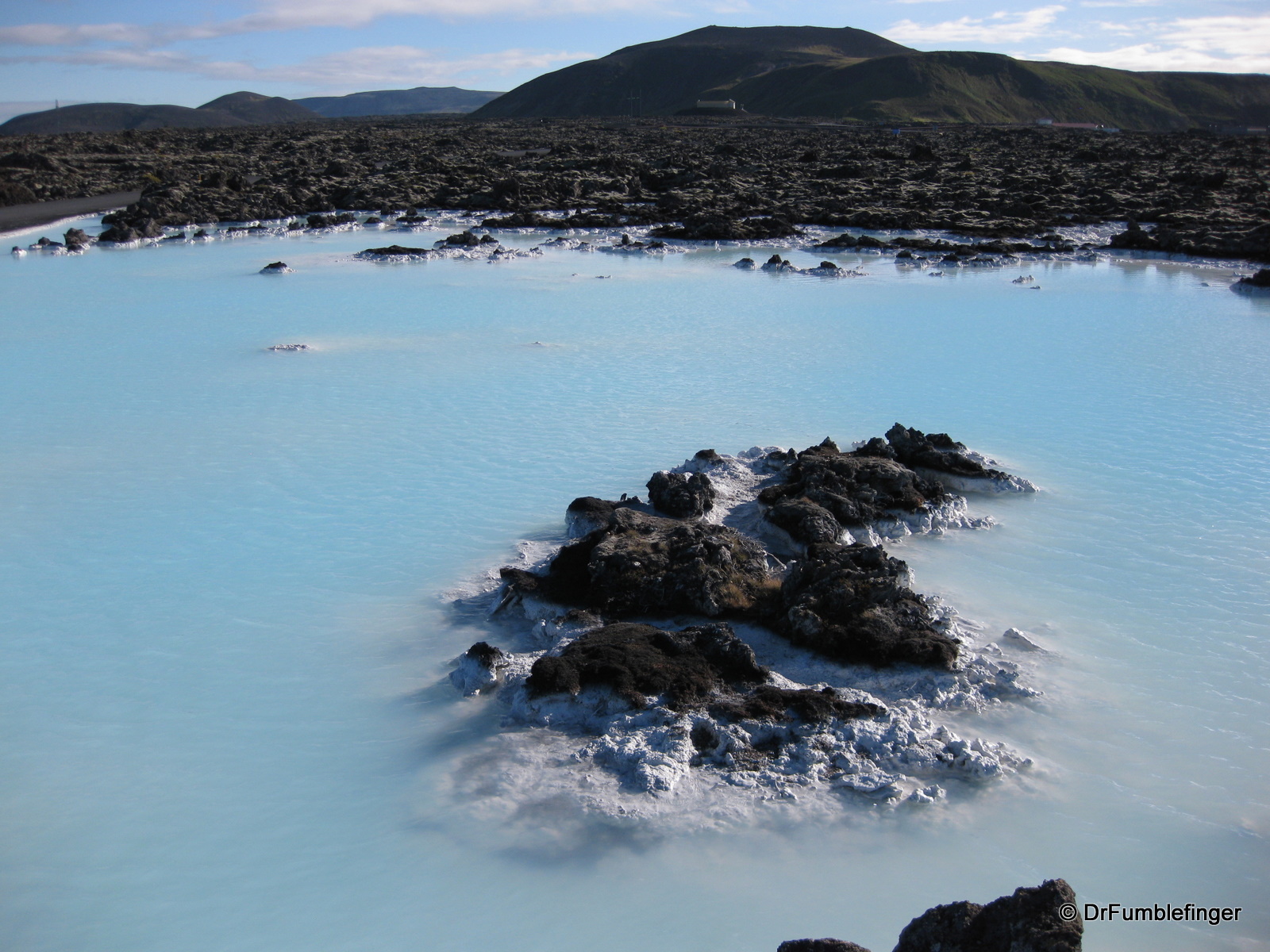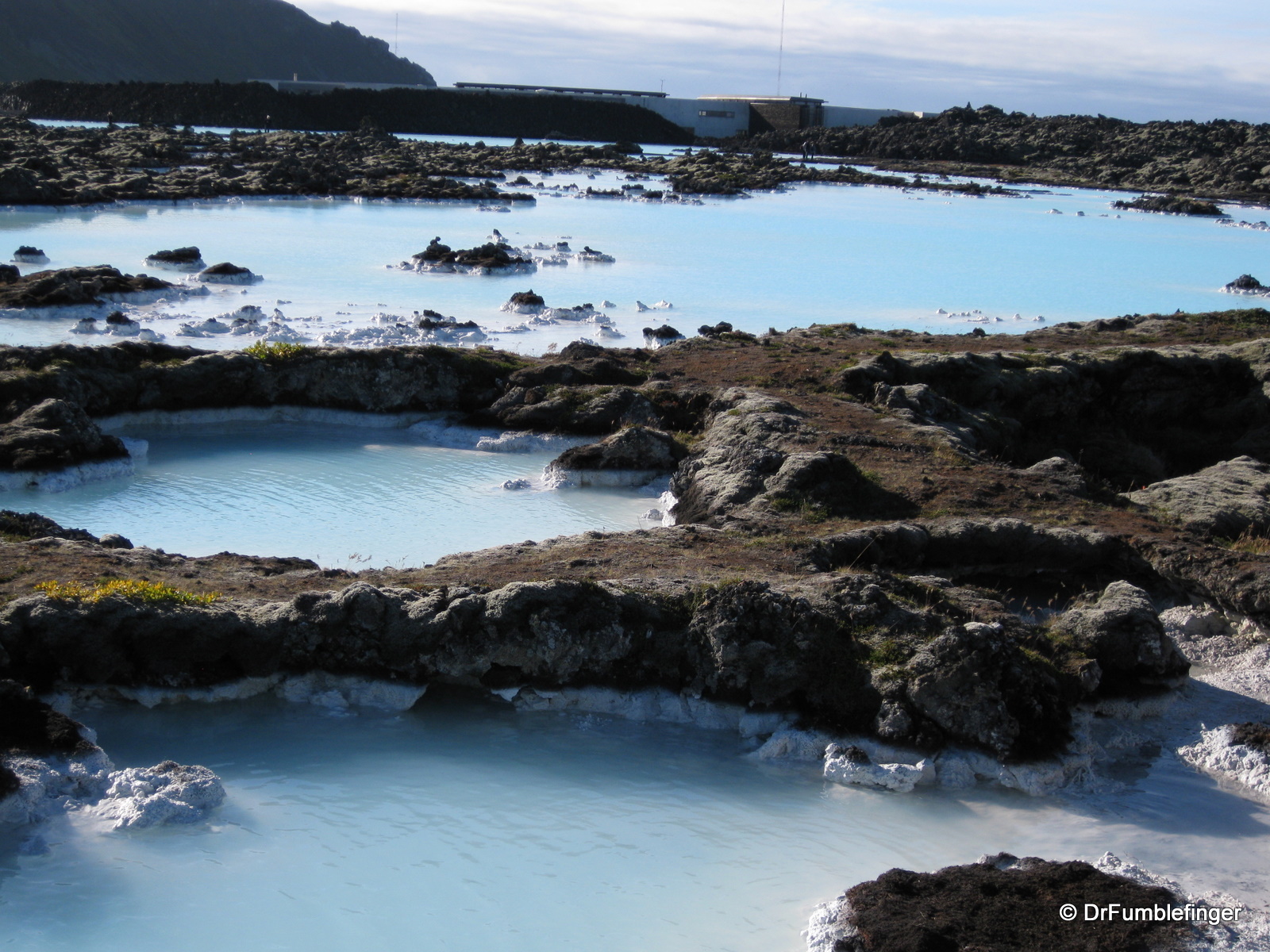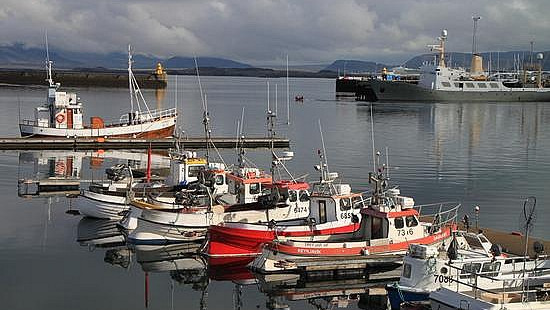
I love visiting places that are rich in scenery, mountains, rivers, waterfalls and hiking; Iceland seemed a good fit for me. Until a few years ago the cost of a trip to Iceland was prohibitive. But recently prices have dropped to the point where Iceland is no longer “extremely expensive”, just “expensive” (in line with much of Europe). So off my brother and I went and on one of Icelandair’s 757s and had a terrific early fall visit at the end of their busy summer tourist season. This is the first of a few posts outlining the different regions we visited during our stay in “Island” (how locals spell their country’s name).
When people hear the name “ICEland” it conjures up images of blowing snow and arctic weather. Even though it’s just south of the Arctic Circle and certainly doesn’t have a tropical climate, Iceland benefits from the moderating effect of the North Atlantic Drift current. So while the weather is never hot, coastal Iceland has milder winters than many cities in the Northern coastal US or Canada (the same is not true of the weather in the interior of the country which is far less hospitable). And it rains a lot so be sure you have a good rain jacket (it can be very windy so umbrellas aren’t practical). Also be aware that the amount of daylight varies tremendously, with almost no night in the summer (“midnight sun”) to almost no daylight in the winter; when we visited the days were about of similar length to what we were experiencing back home.
During the early part of the millennium Iceland had been experiencing a financial boom but the global financial crisis of 2008 hit Iceland harder than most, a blow from which it is still recovering. This crisis is to your advantage as a tourist as the value of its currency (the Krona) has greatly declined and has made the country far more accessible. If you’ve ever thought of visiting Iceland now might be the time to plan your trip.

Church on “The Pond”, Reykjavik
Most visits to Iceland include a stop in the capitol city of Reykjavik, the world’s northernmost capitol. In a country of only 300,000 residents about 60% live in or immediately around Reykjavik. Besides being the country’s most visited city it is also its political and business center and its cultural core. By most standards Reykjavik is a relatively small city, especially for a national capitol. But its smaller size is also one of its greatest assets for it can easily and quickly be explored on foot. It offers a great selection of restaurants, shops and hotels and for the younger crowd has an active night life. Like Ottawa, it feels safe, friendly and inviting. To illustrate I’d like to share an experience told us by fellow tourists. A group of mothers all pushed their baby carriages to a coffee shop (where these tourists were having a cup of java) on a nice fall day. They left the babies sleeping outside for the better part of an hour while they went inside for coffee and conversation knowing their children would be safe. I’m not sure I’d ever have that kind of faith in mankind but I’m glad to know there are still places in the world that do.
It’s hard to put a label on Reykjavik’s character. While it’s part of Europe it is remote from the continent and not a usual European city in that there are no castles, squares, monuments or ancient buildings. Still, it is a charming town, in many ways more American than European in that it is fairly new (mostly built in the 20th century). It has an energetic youthful feel and is pleasing to look at and walk around in. You’ll feel right at home. English is well spoken and understood by almost everyone throughout the island so you don’t have to try too hard to master the rather difficult Iceland tongue. Many visitors never venture far outside Reykjavik except perhaps to take a bus tour of some of the sights just beyond the city.
There’s enough to see and do in Reykjavik to keep you busy for a few days. Some of what I’d recommend includes:
1) The harbor, an intimate part of Iceland’s history and livelihood. The waterfront is a beautiful setting and you’ll find a large number of commercial fishing boats in port, as well as an assortment of tourist craft offering fishing, whale and puffin watching tours. There are also trips to some of the small islands just off the coast.
2) The old part of the city is located between the harbor and the pond (Tjornin). It’s a great location in which to walk around and is where you’ll find most restaurants and many hotels. Enjoy the buildings made almost exclusively of steel, concrete and glass (wood is not grown on the island and an expensive and only rarely used building resource). This is also where you’ll find the parliament house and entrance to city hall.
3) The area around the pond was my favorite place to walk, with pleasing scenery and a great ambiance. You’ll have nice views of the University, City Hall, several churches and many pretty homes. It is a popular place for locals and their children to feed stale bread to the ducks.

Statue of Leif Eirikksson in front of Hallgrimskirkja
4) The Hallgrimskirkja is a strikingly interesting and attractive church and likely the most photographed site in Iceland. Situated on a central hill, it is clearly the dominant building in town and is the largest church in Iceland. Visit the statue of Leif Eirikksson in front of the church. Enjoy the church’s grand architecture (designed by Gudjon Samuelsson), evocative of the many basalt columns and cliffs one sees around Iceland; the church almost seems to be erupting from the hill. Enter it to find a large sanctuary that, in the manner of many Lutheran churches, is plain. The one extravagance is a beautiful pipe organ which contains 5275 pipes. Its sound is terrific! For a modest fee you can take the elevator up 75m. to the top of the spire, something I’d recommend to everyone especially on a clear day. I think this observation platform provides the finest overview of the city and surrounding peninsula. Just remember that you are in a bell tower so don’t be too startled when there’s a sudden loud gong behind you.
5) The city has a large assortment of museums and galleries, mostly dedicated to the sculpture and art of Icelandic artists (most notably the National Gallery of Iceland). Probably the best museum to visit is the National Museum of Iceland which features the a history of the nation. The city also features a Maritime Museum, Photography Museum, amongst many others. Do a little research and visit those that interest you the most (if any).
6) Enjoy something that is uniquely Icelandic, such as visit to a shop making their distinctive sweaters or lava rock jewelery. Visit one of the many geothermal pools & spas, and be sure to enjoy some of Iceland’s fine food. The country takes its culinary skills very seriously and local dishes — many featuring seafood and lamb — are generally excellent.
Accommodations: There are many fine hotels in Reykjavik. We stayed at the Hilton which was a great hotel. Prices were fair, the rooms comfortable and modern, and the dining room (Vox) was top notch (especially notable was their breakfast buffet and the lamb dish I tried at dinner). The only downside was that it was a little over a mile from downtown.

The Blue Lagoon
The Blue Lagoon
Located just under an hour’s drive from Reykjavik and situated close to Keflavik airport, this is Iceland’s most visited tourist spot. The lagoon is situated near a geothermal electricity generating plant, whose hot water (once it has been pumped from the earth’s core and used to power steam turbines) provides the unique feature of the lagoon. The mineral rich water — an usual blue color — also grows algae and all kinds of healing and curative powers are ascribed to it. It’s a fun stop, especially if you have an afternoon flight and a few hours to kill before getting to the airport.
Keflavik Airport
This lovely modern airport is the international gateway to Iceland. It is a well run and easy to use facility. The airport is some 50 kilometers from Reykjavik so you’ll need to arrange transportation into the city. Taxis are always an option but the cheapest way to get to town is on the Flybus, which are always awaiting incoming flights and will drop you off at most hotels in Reykjavik. We had rented a car for the week so this is how we traveled.
(Click on thumbnails to enlarge, right arrow to advance the slideshow)
